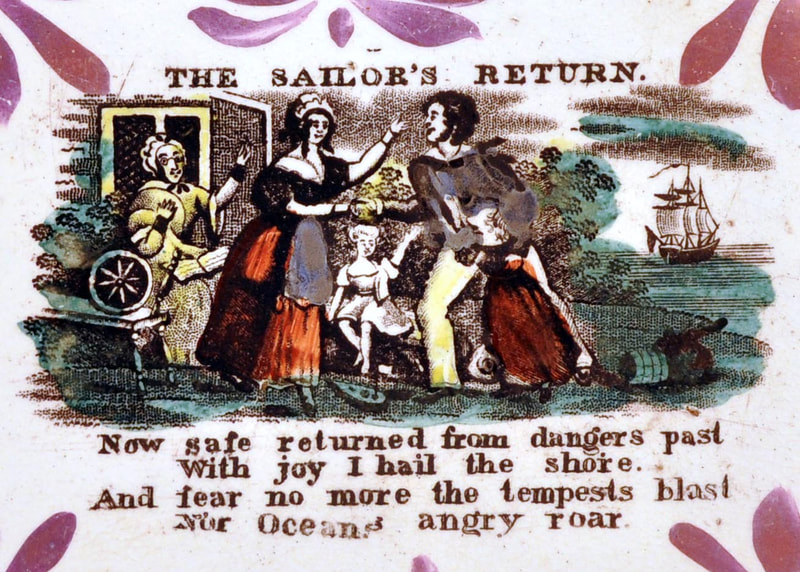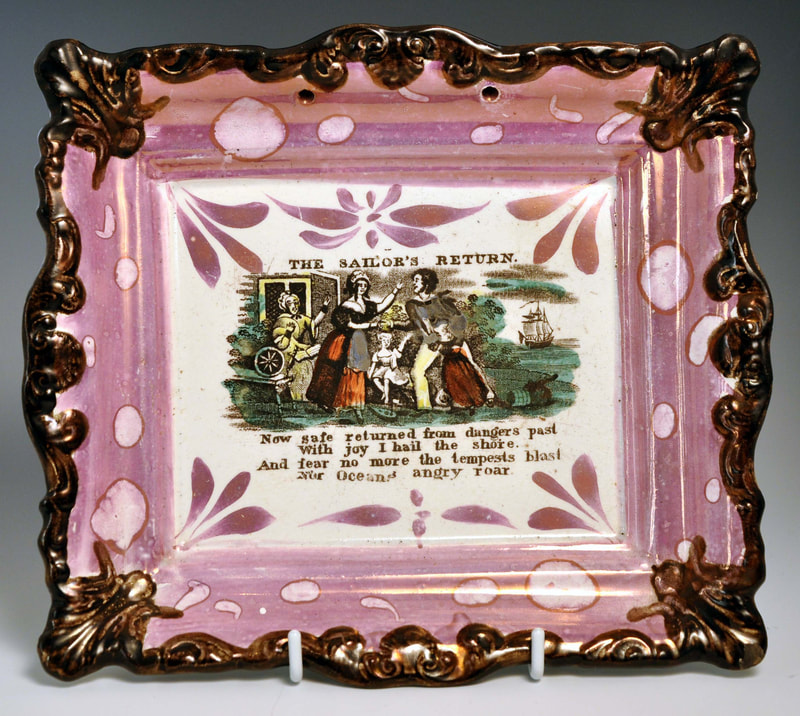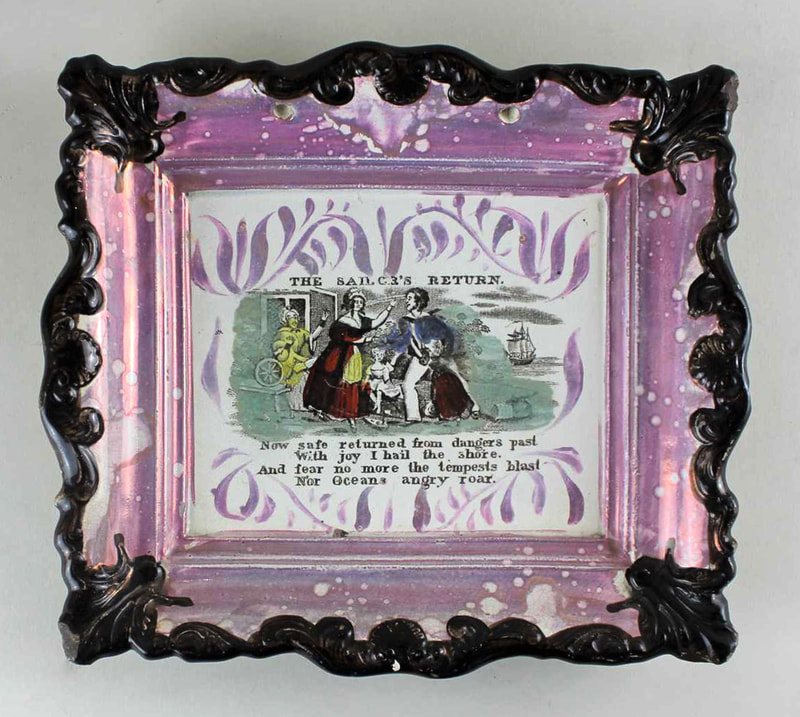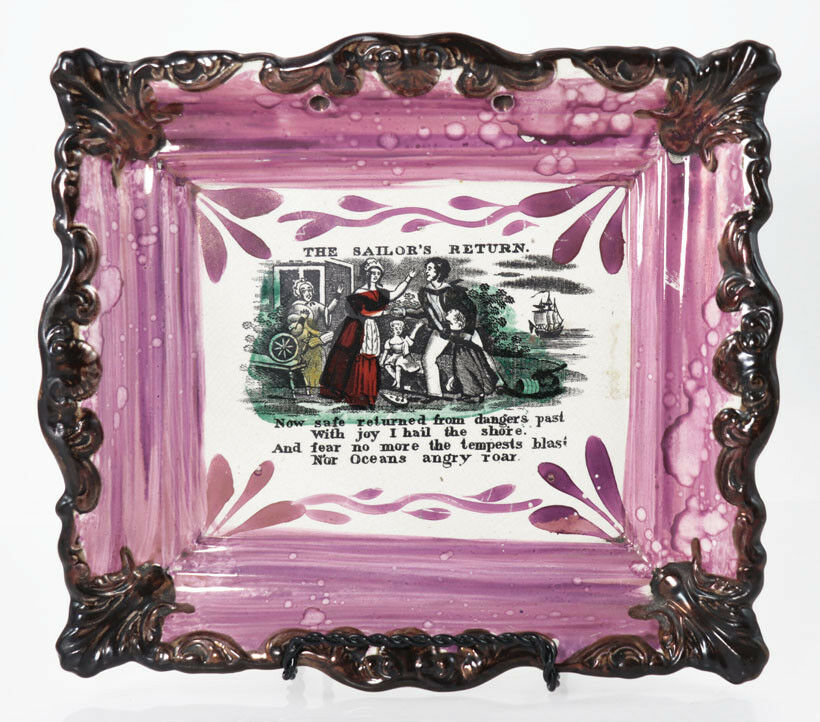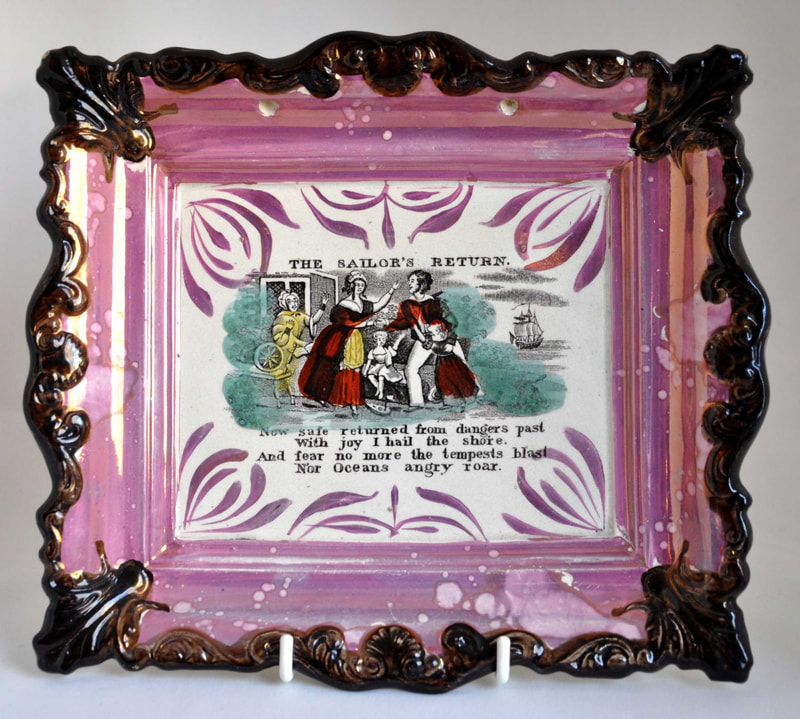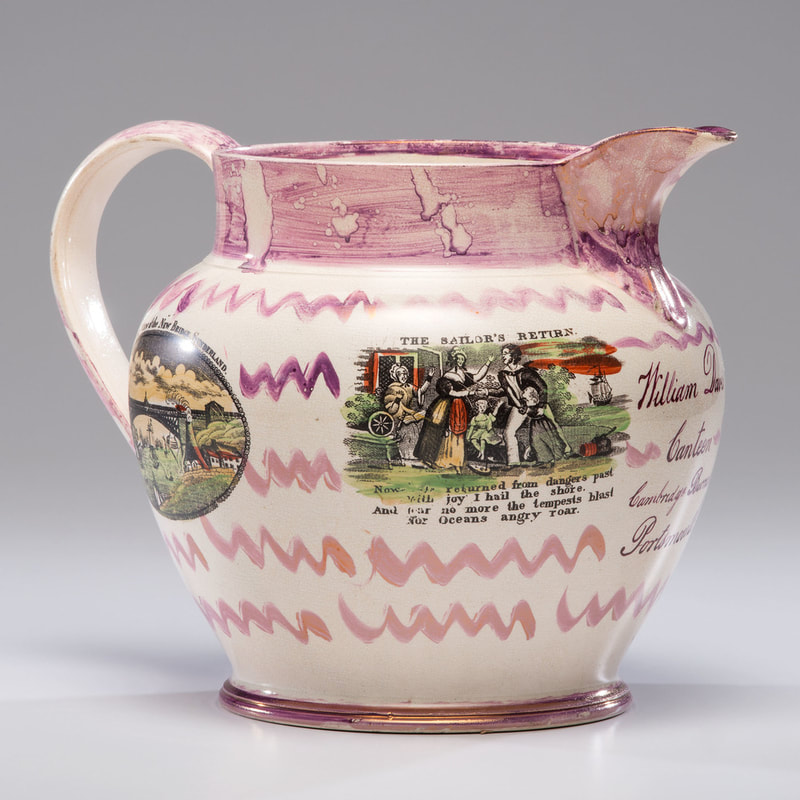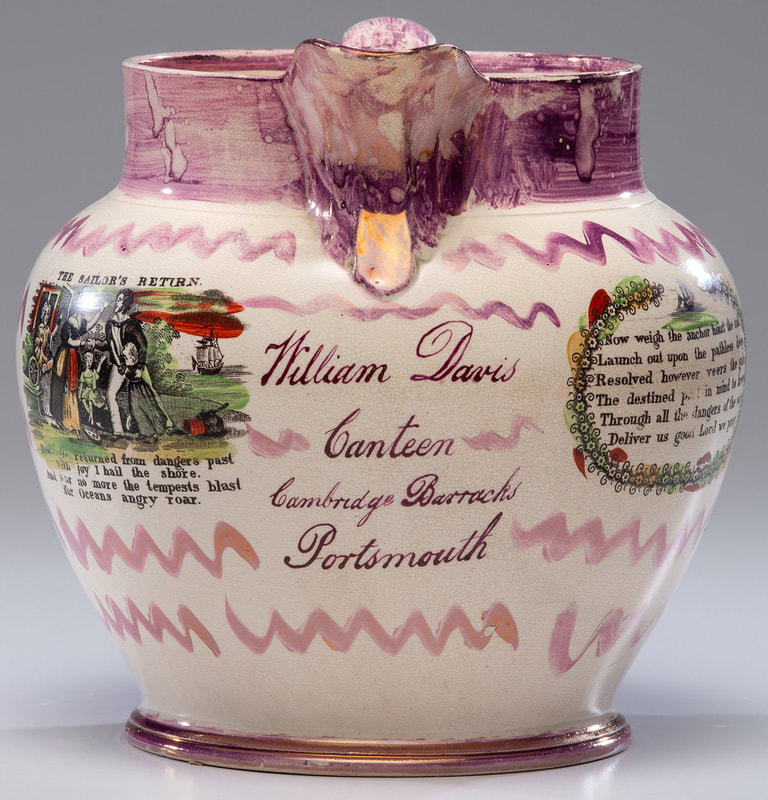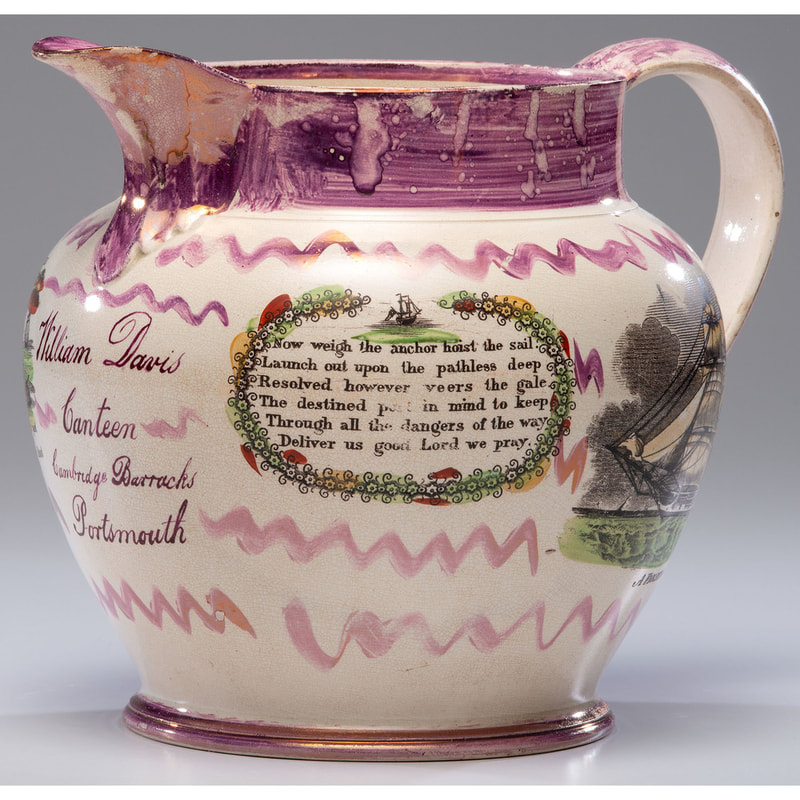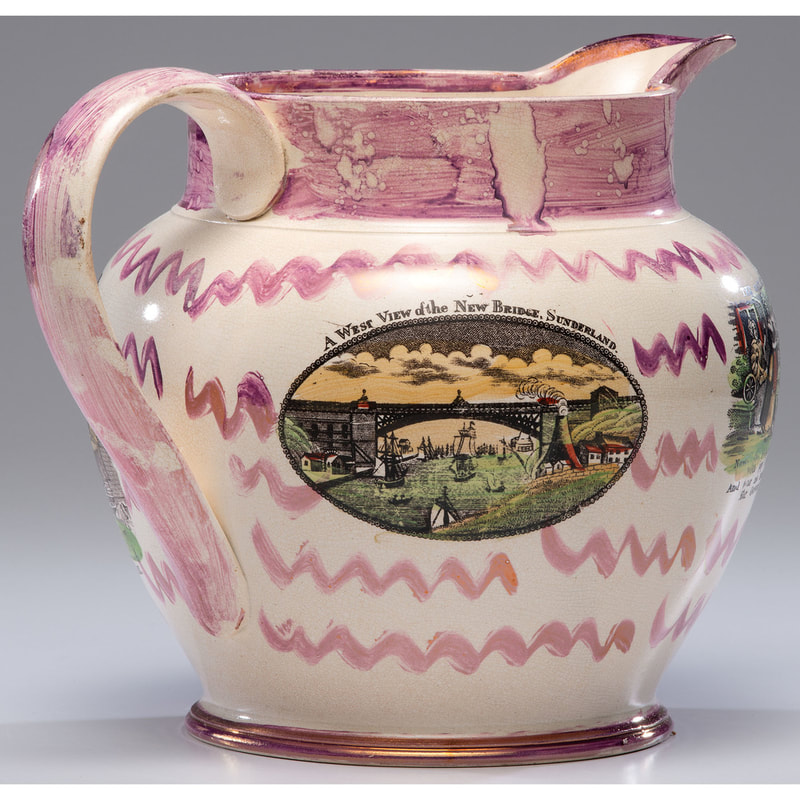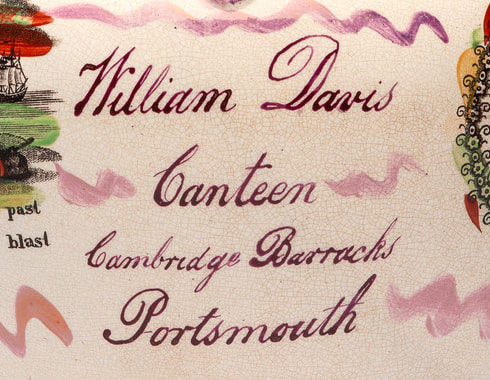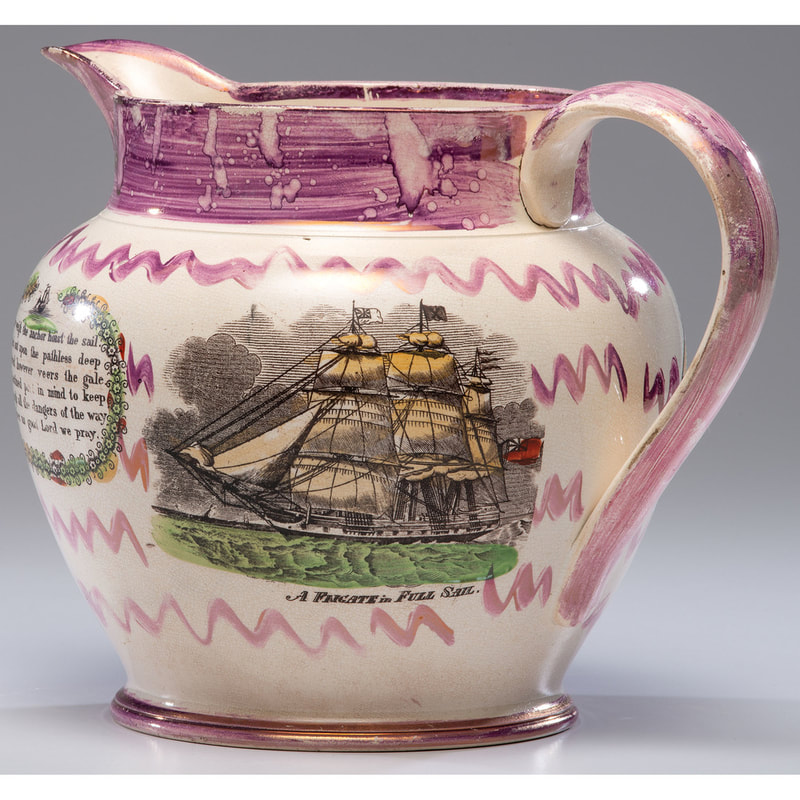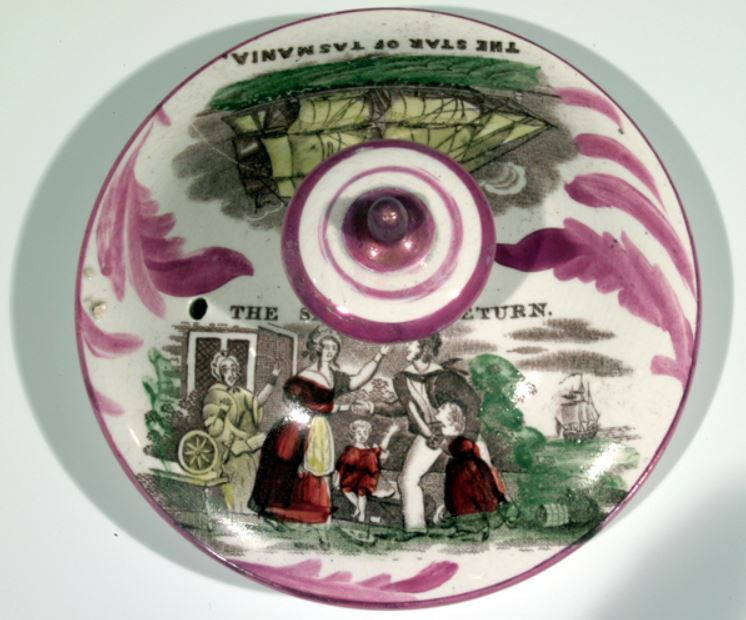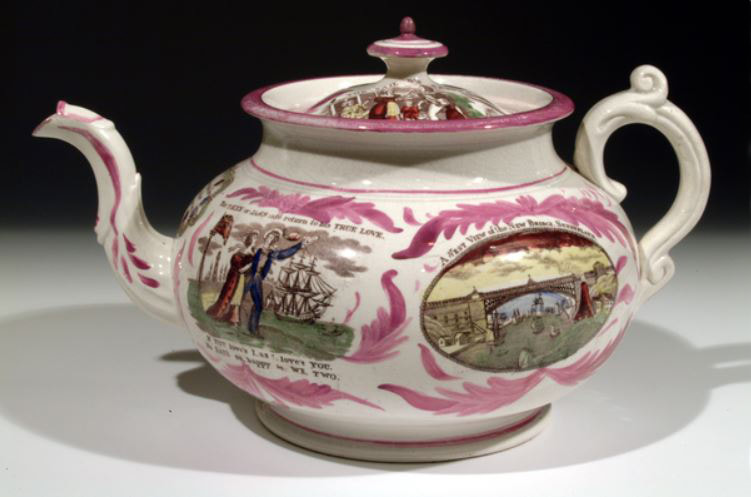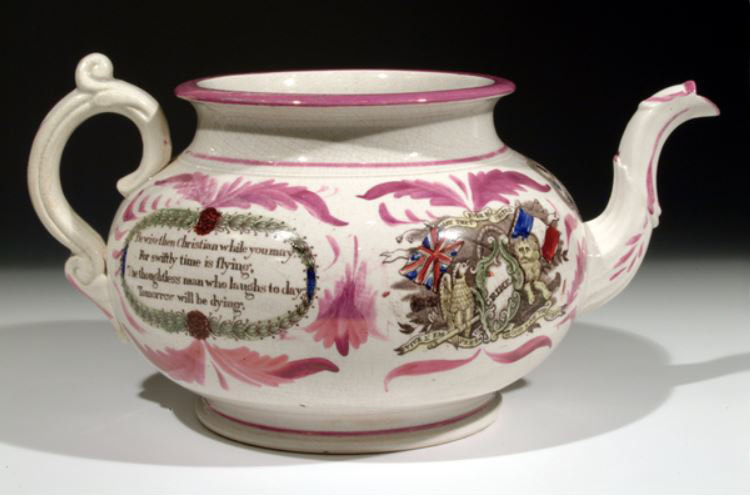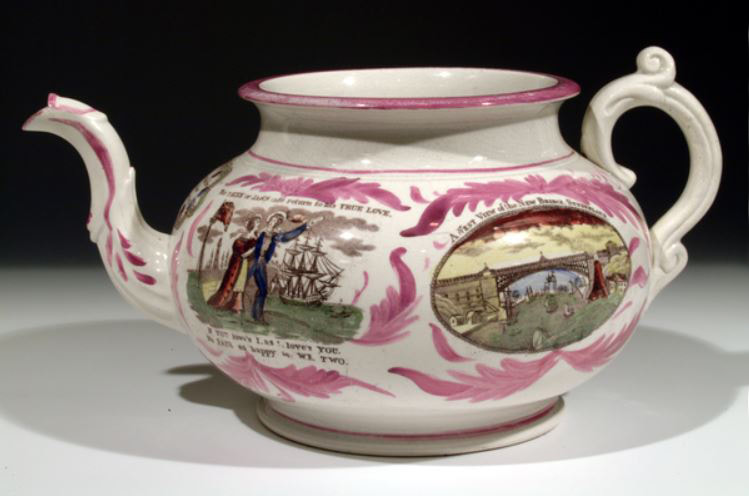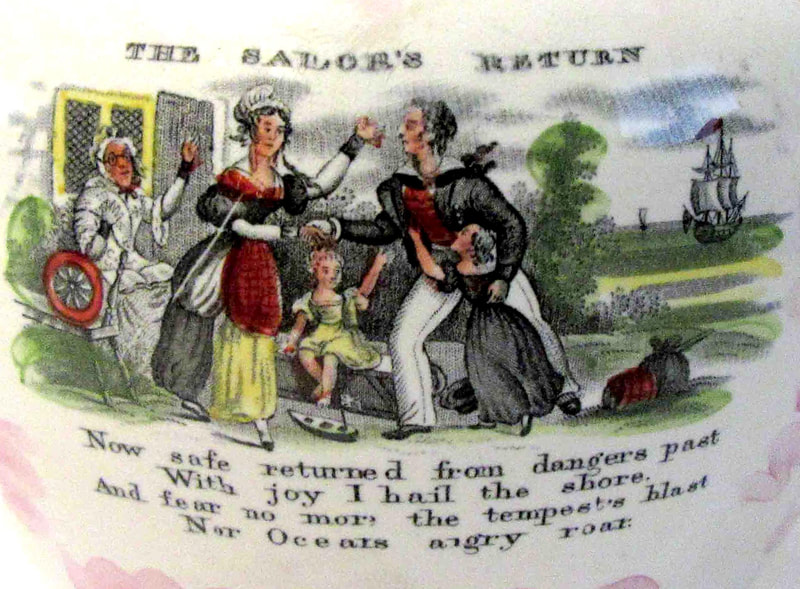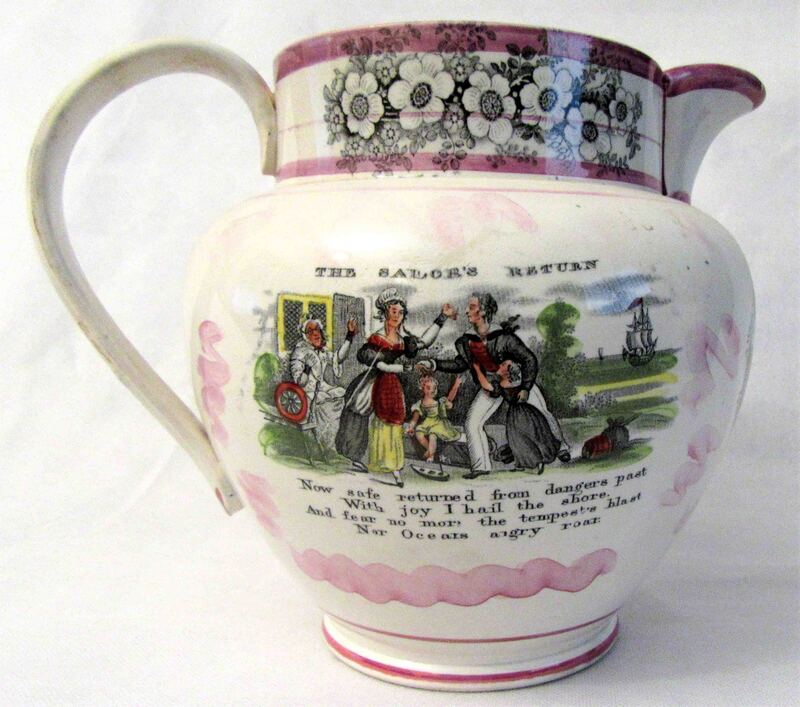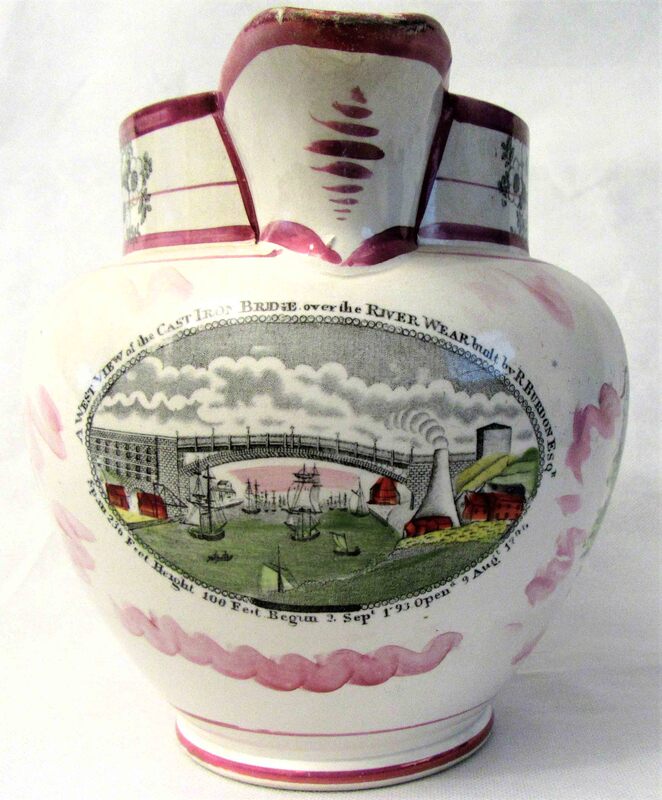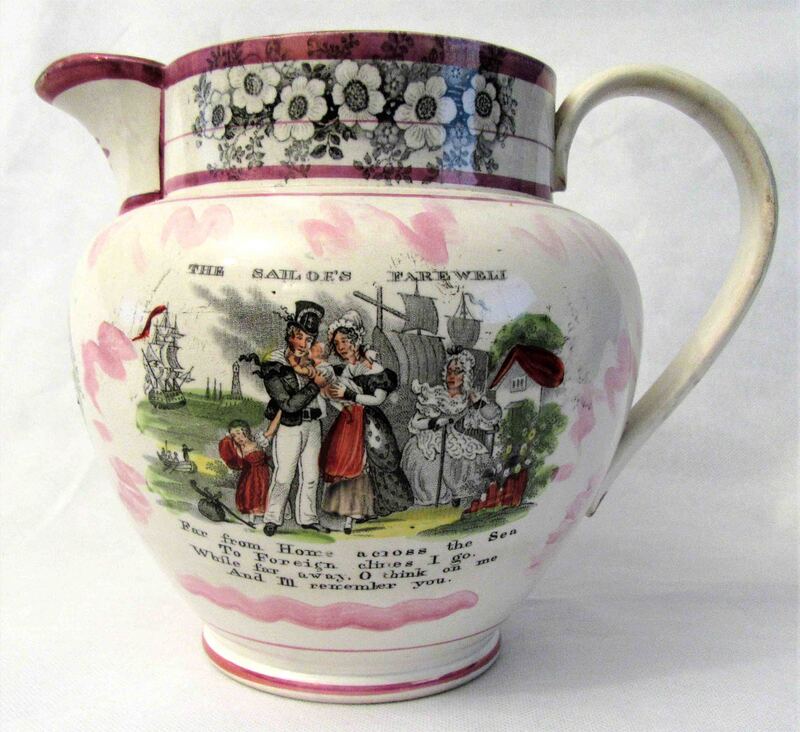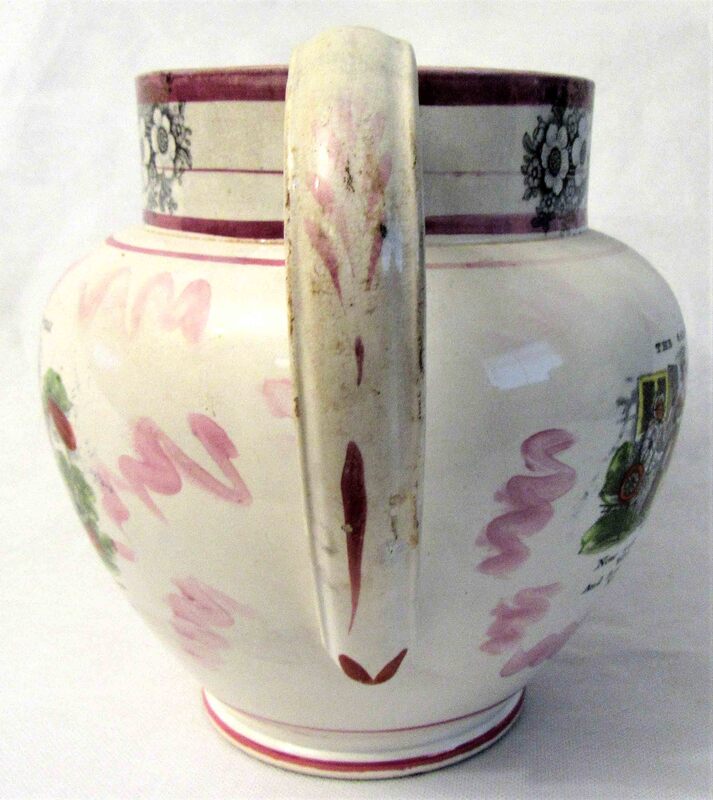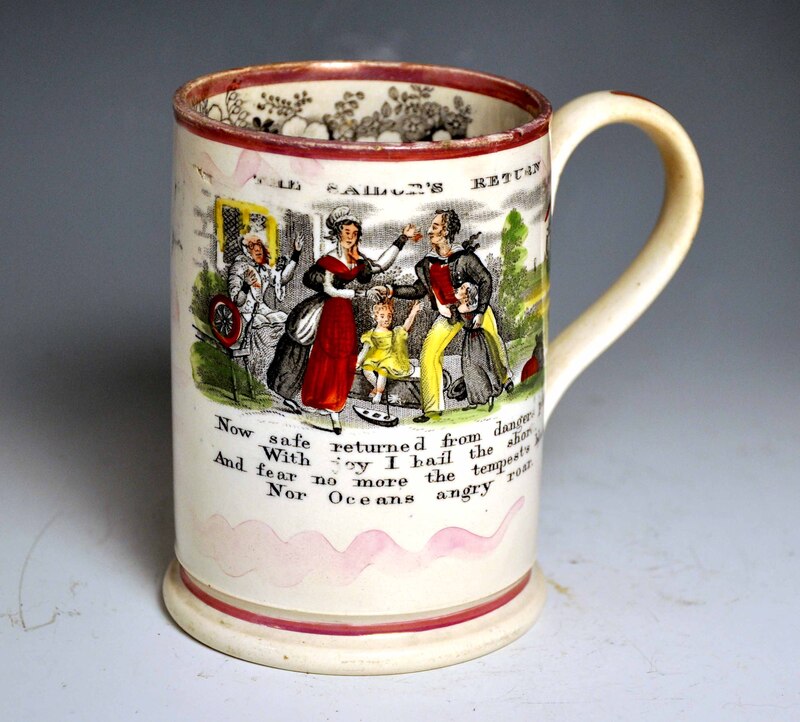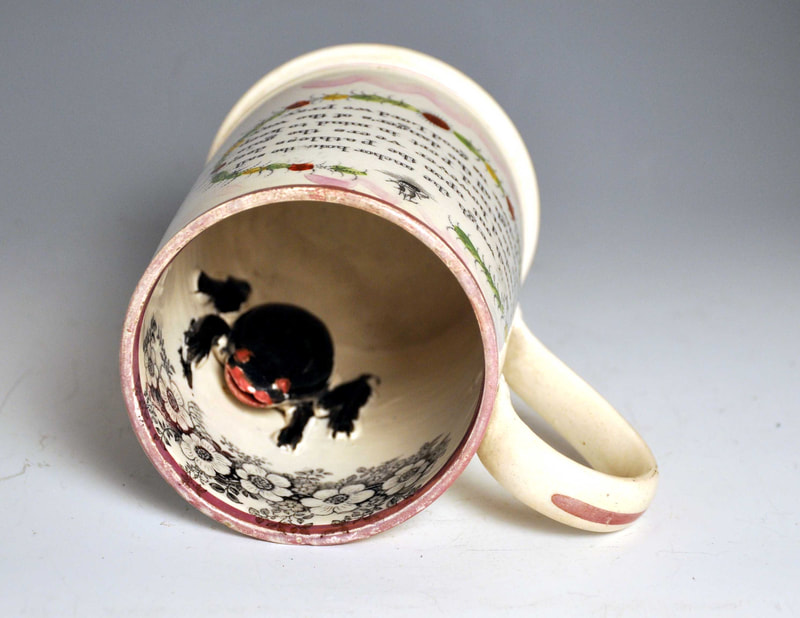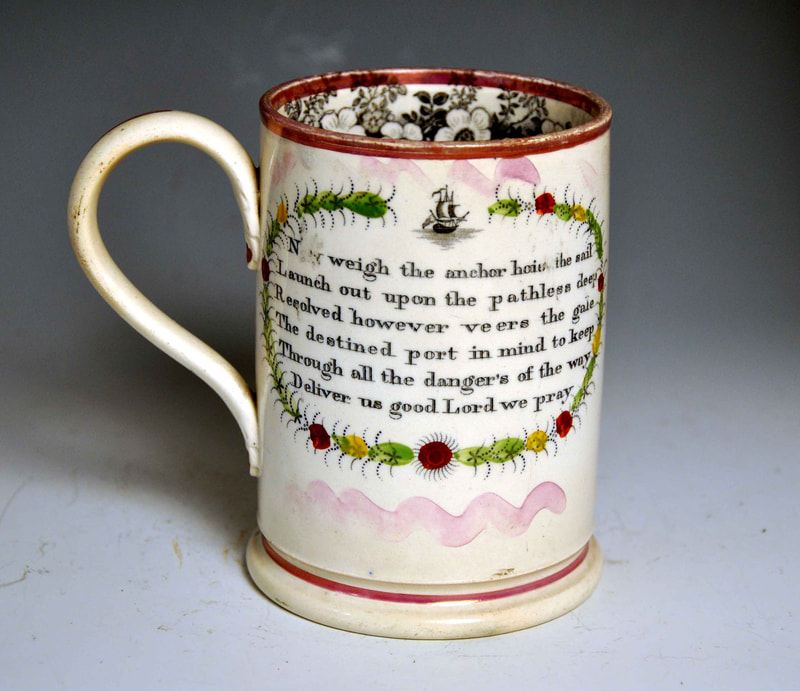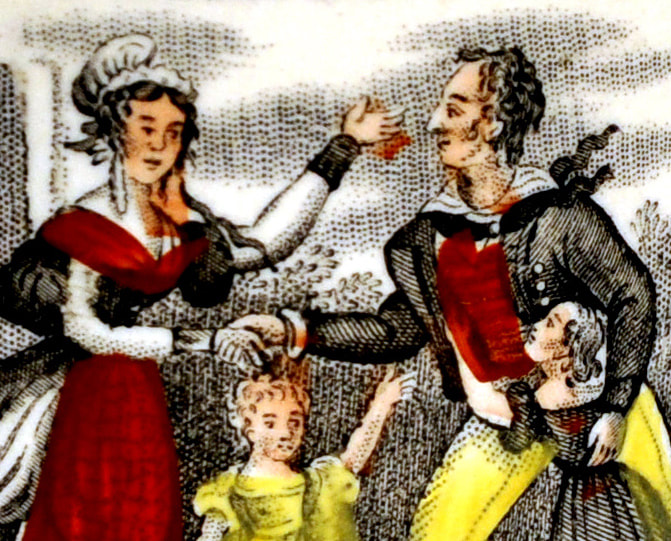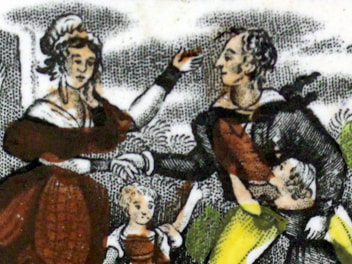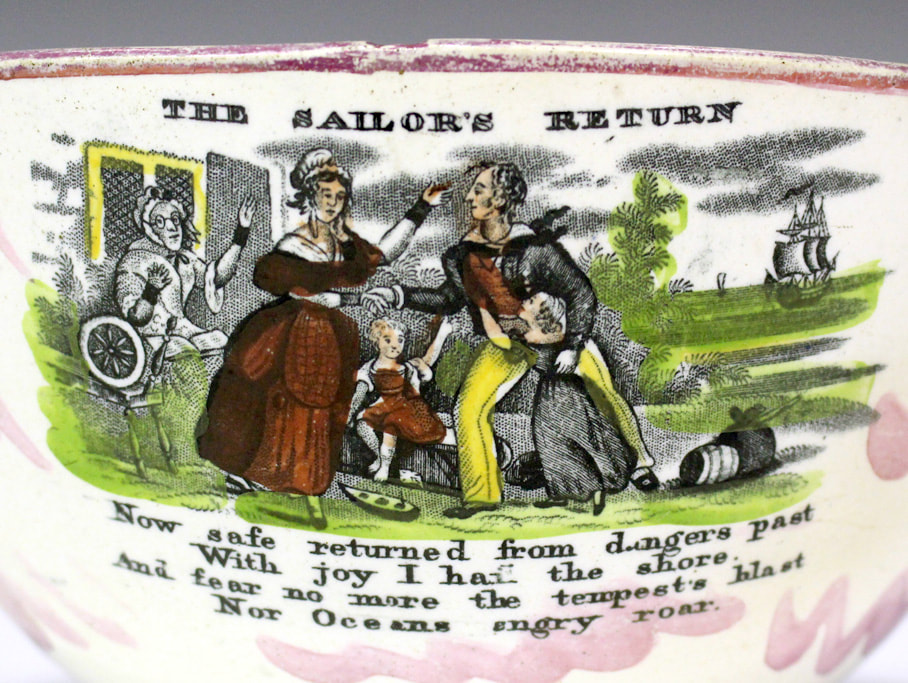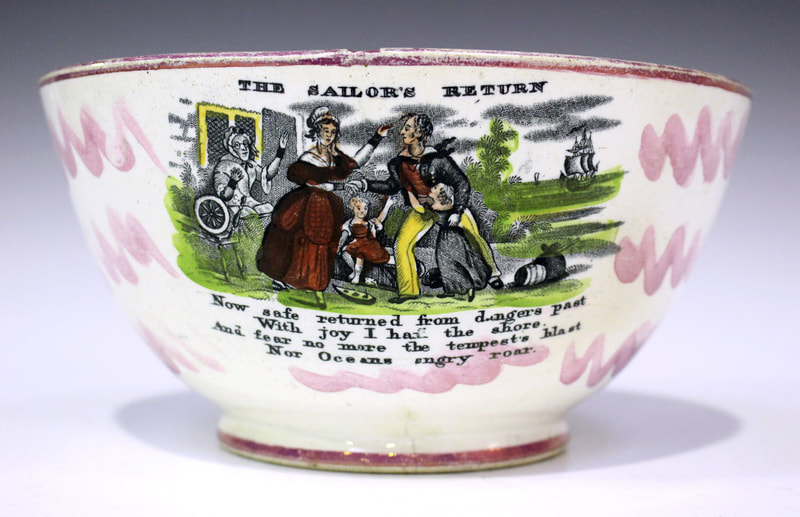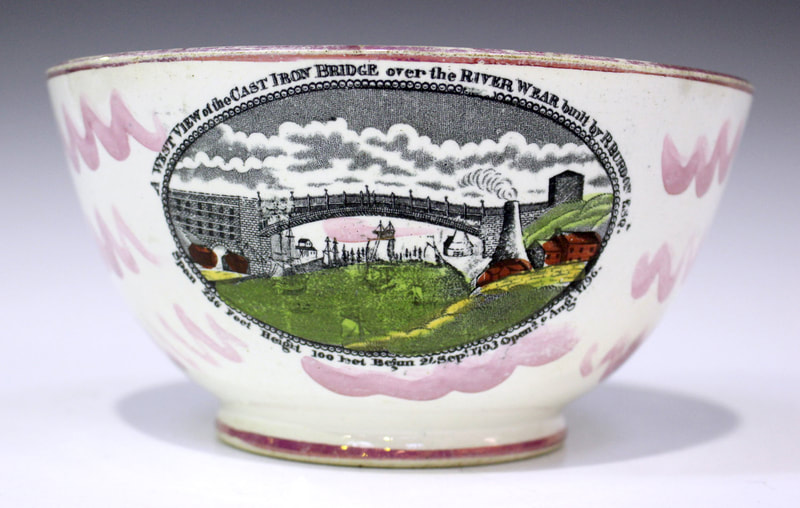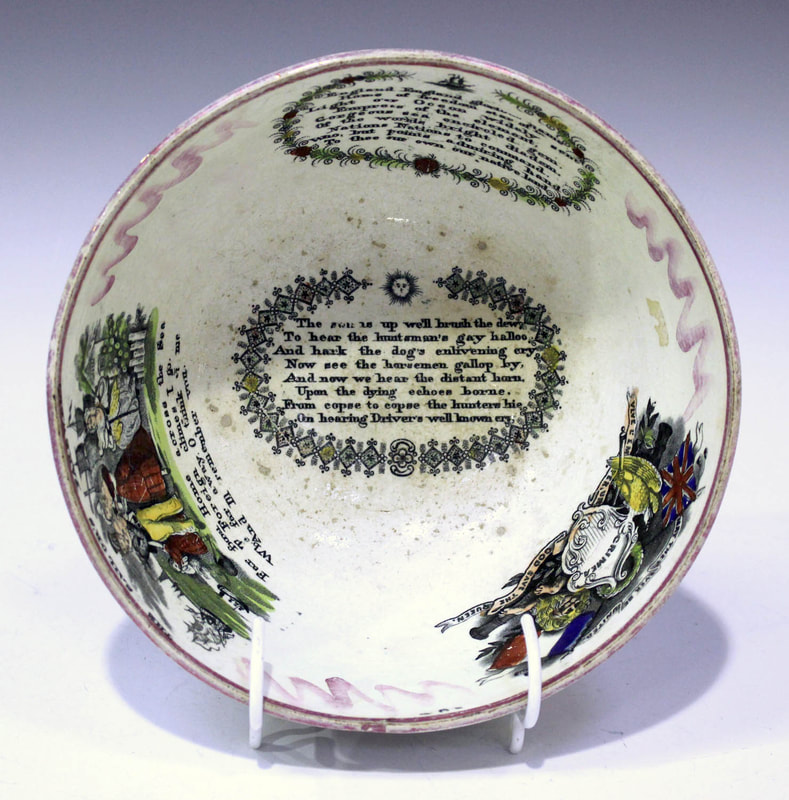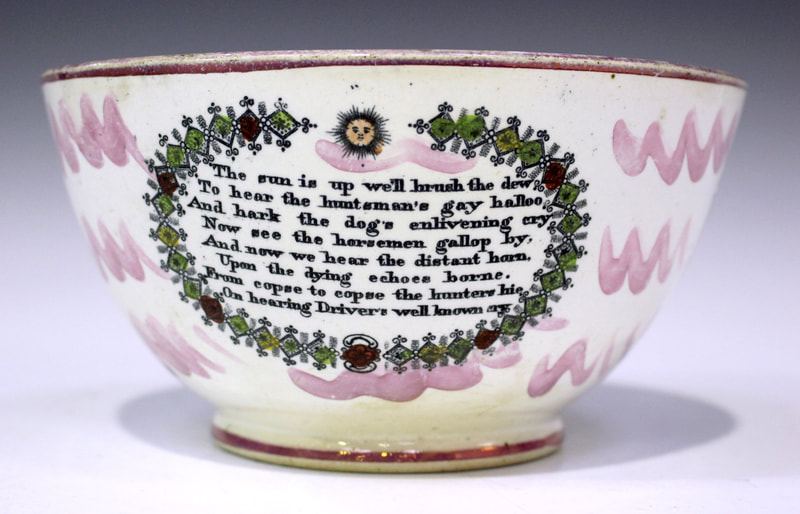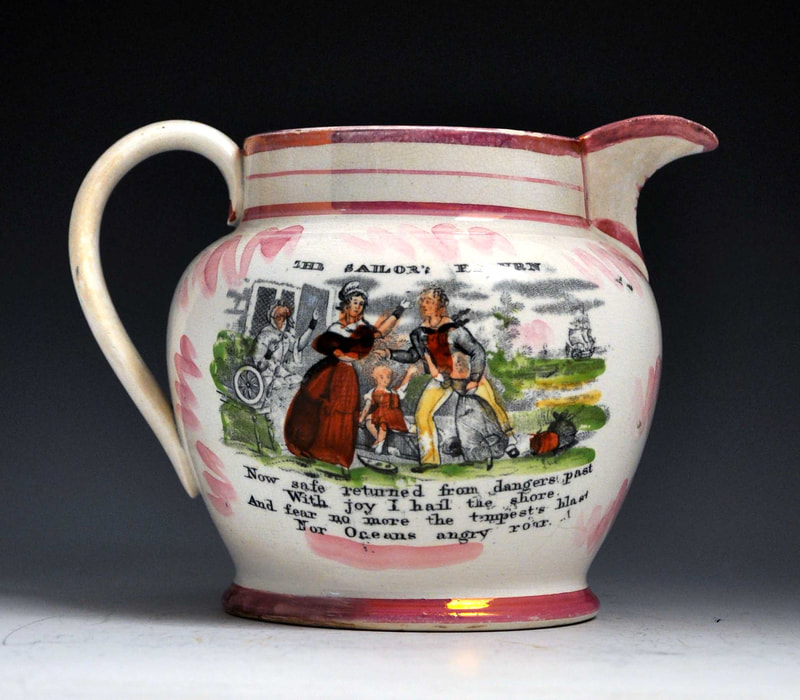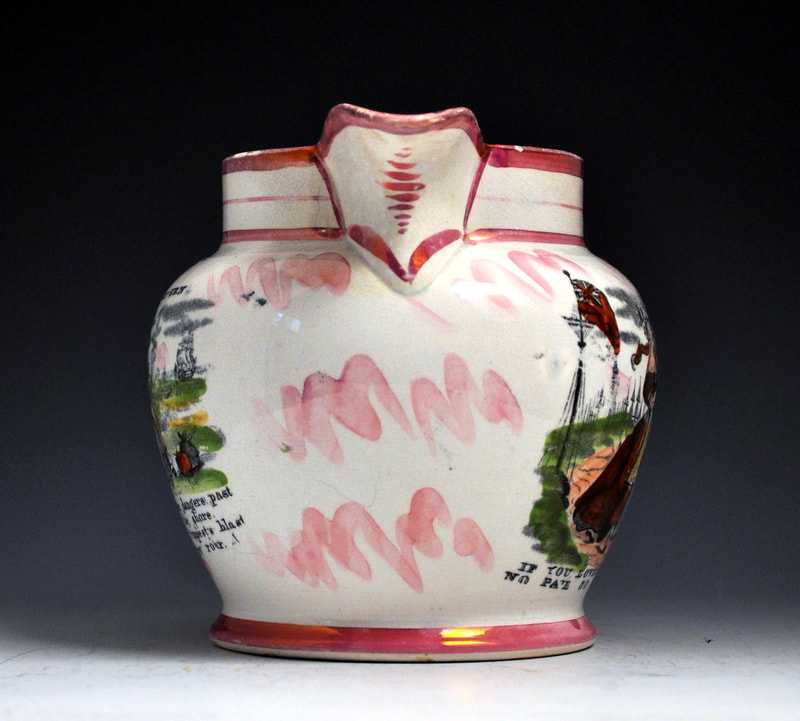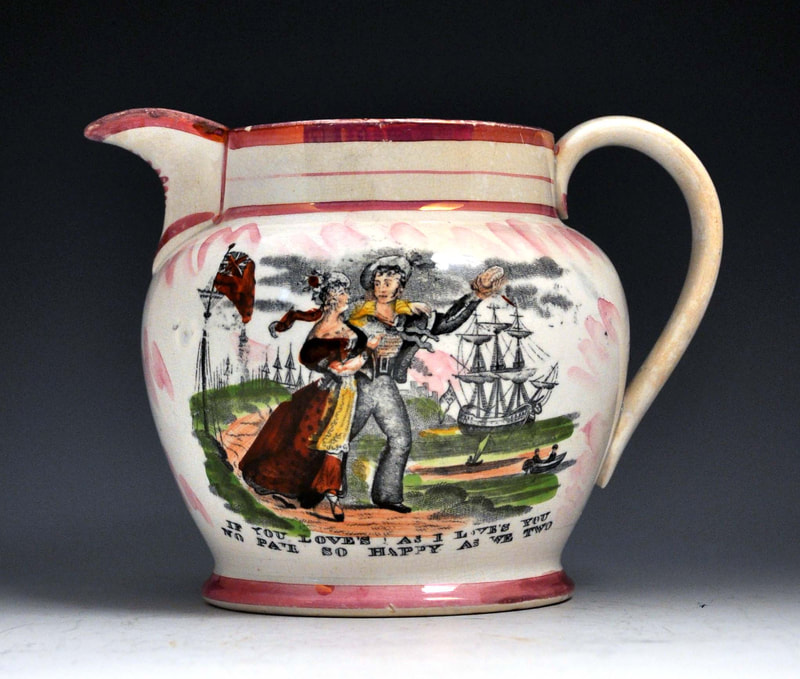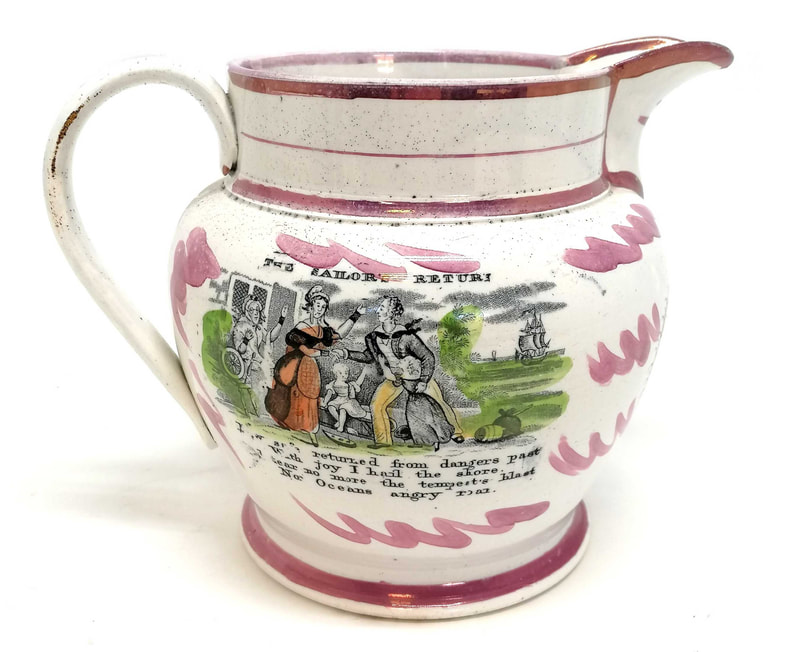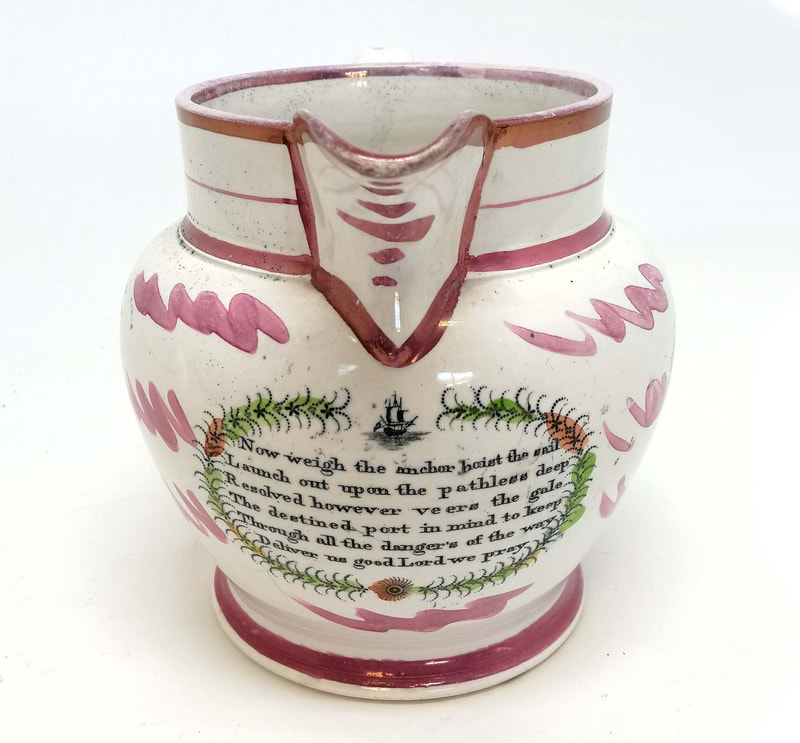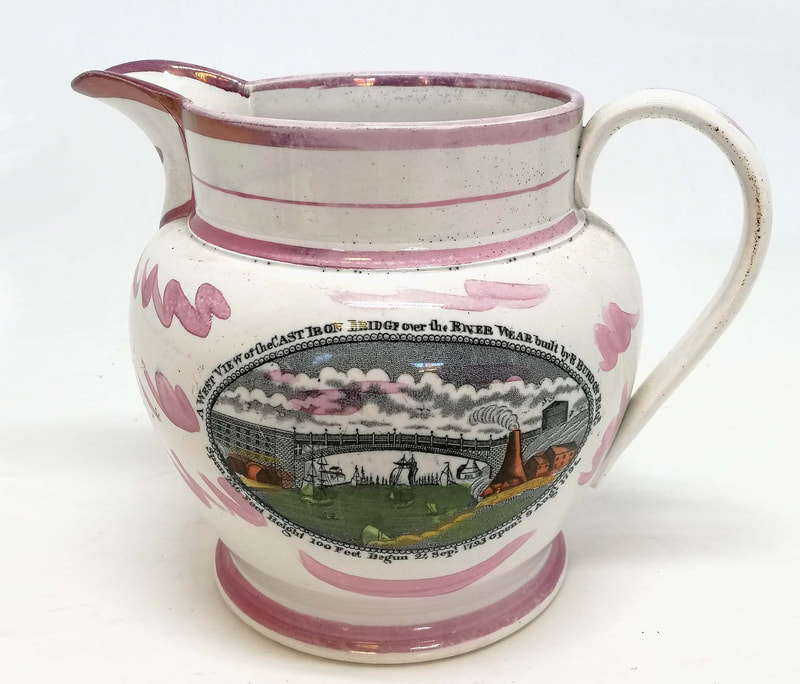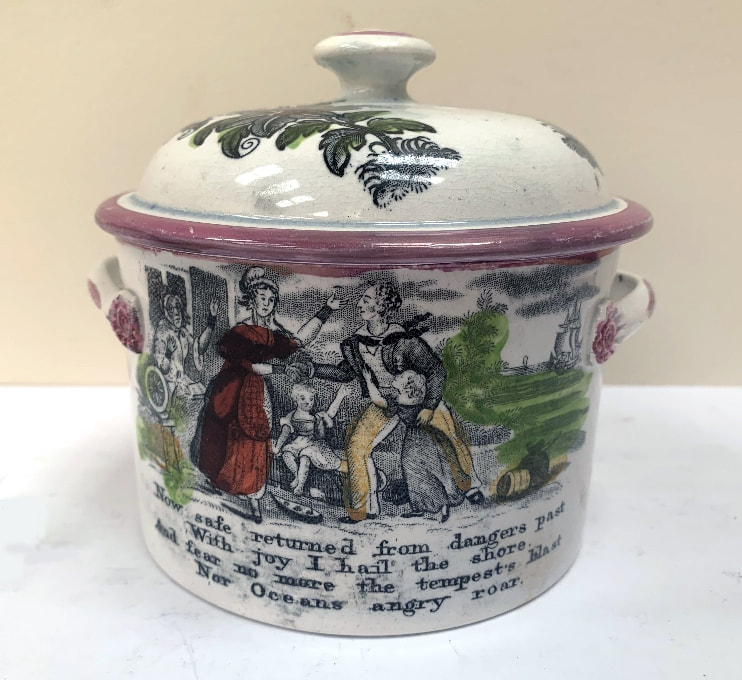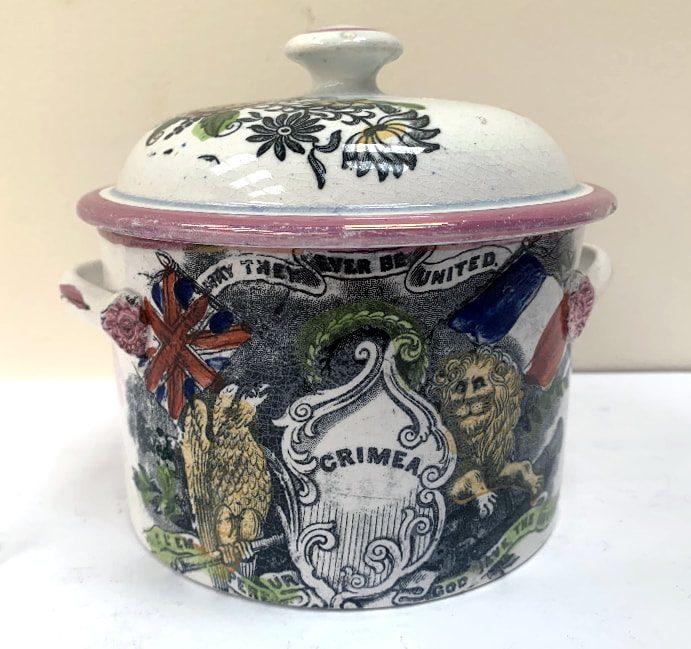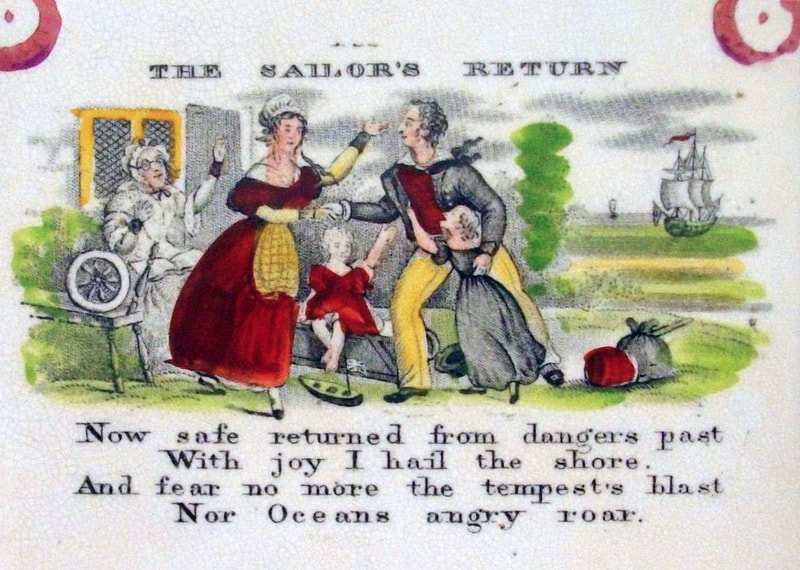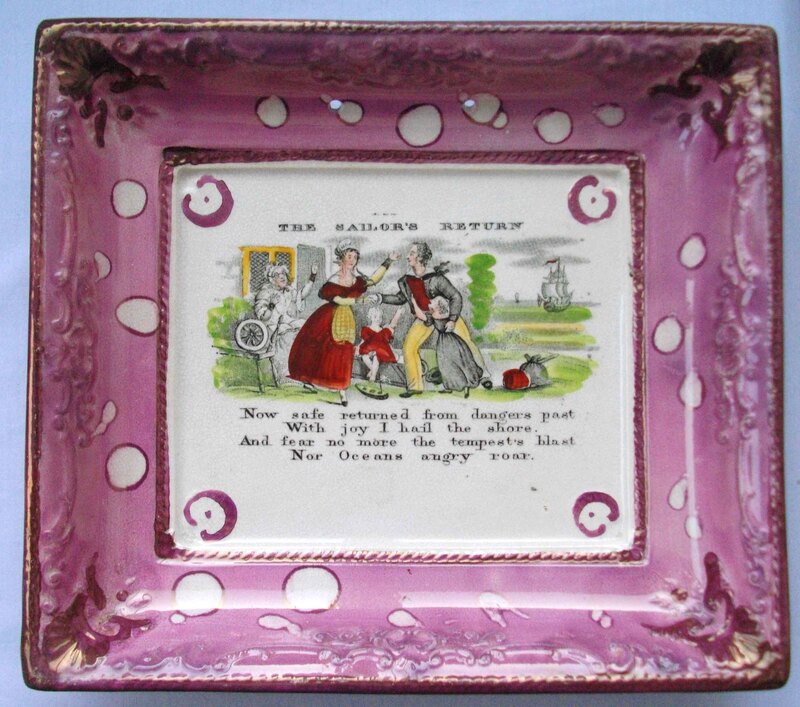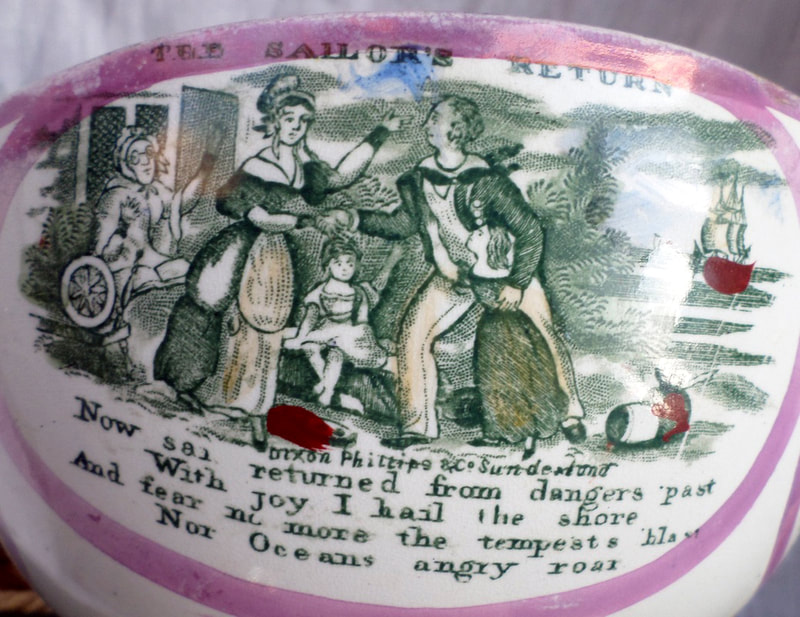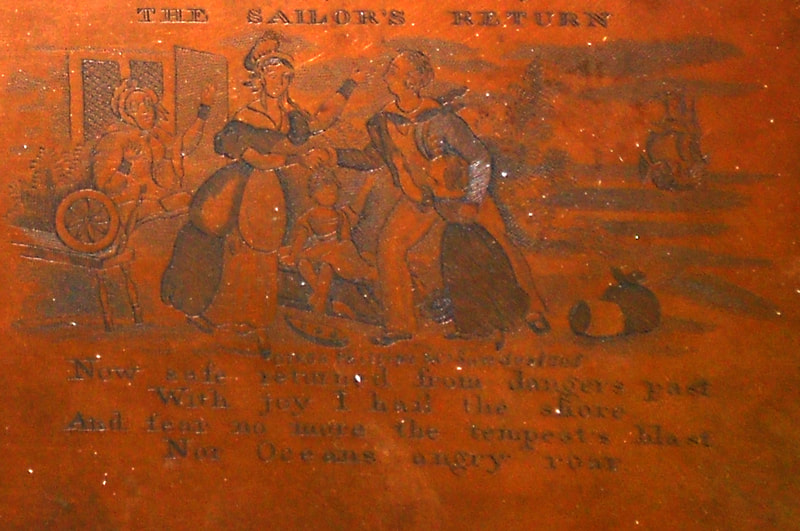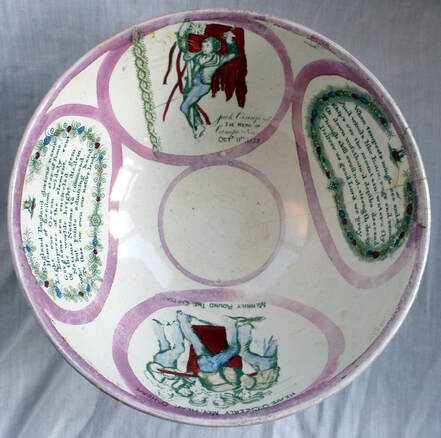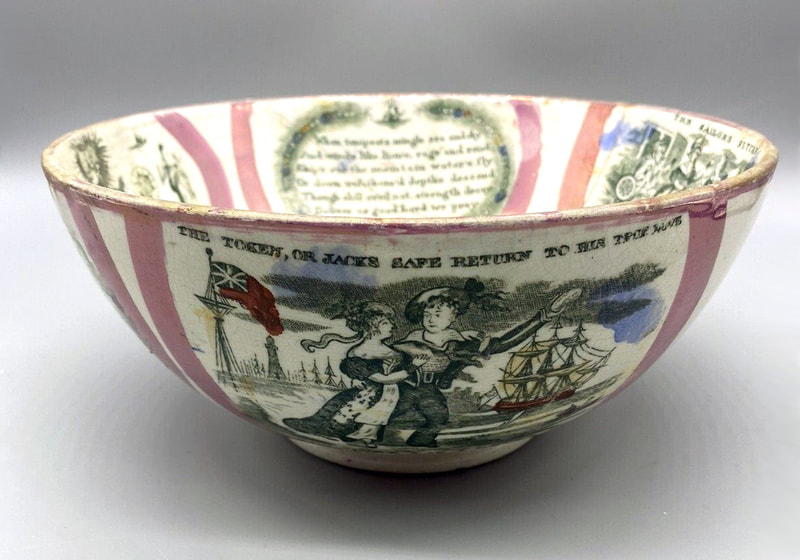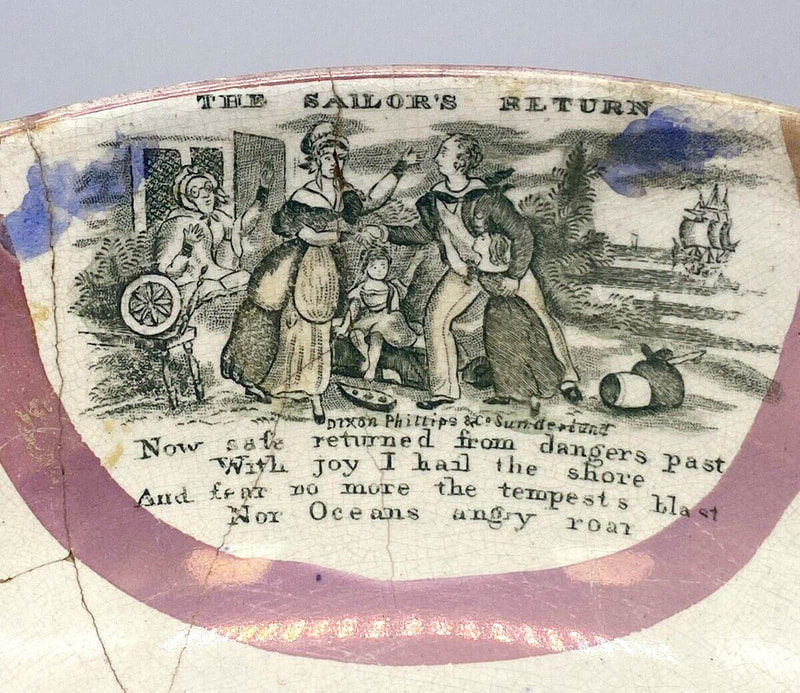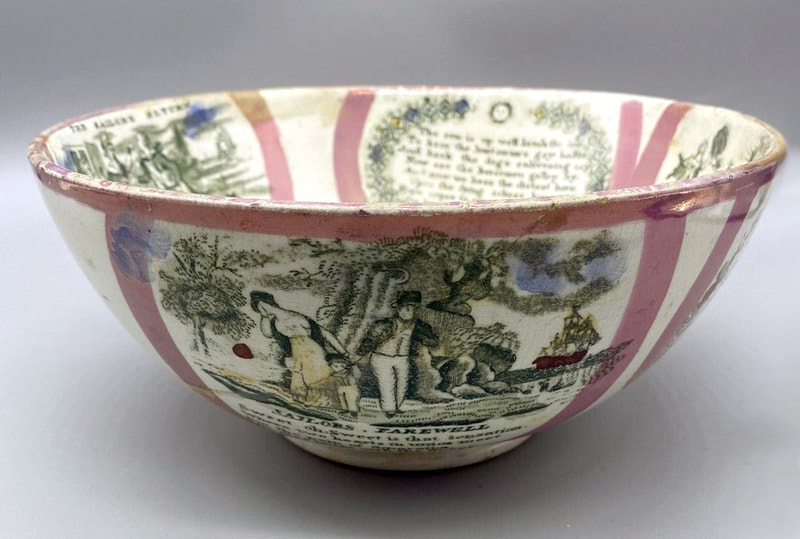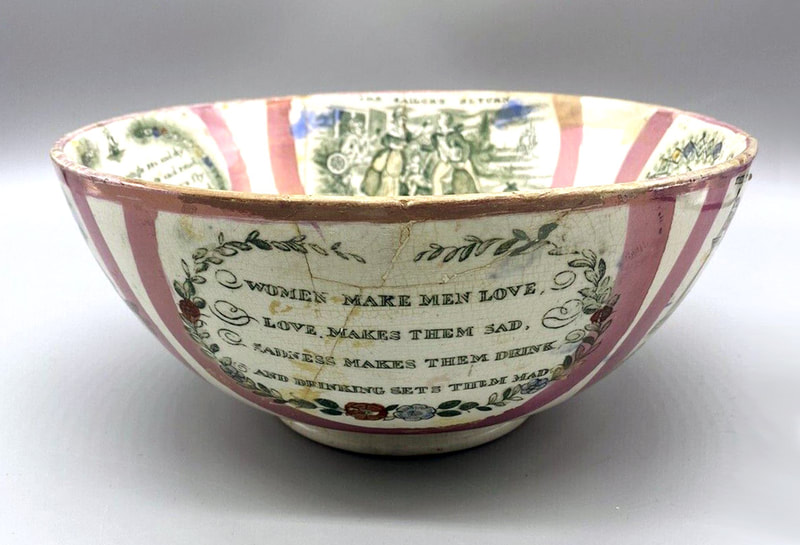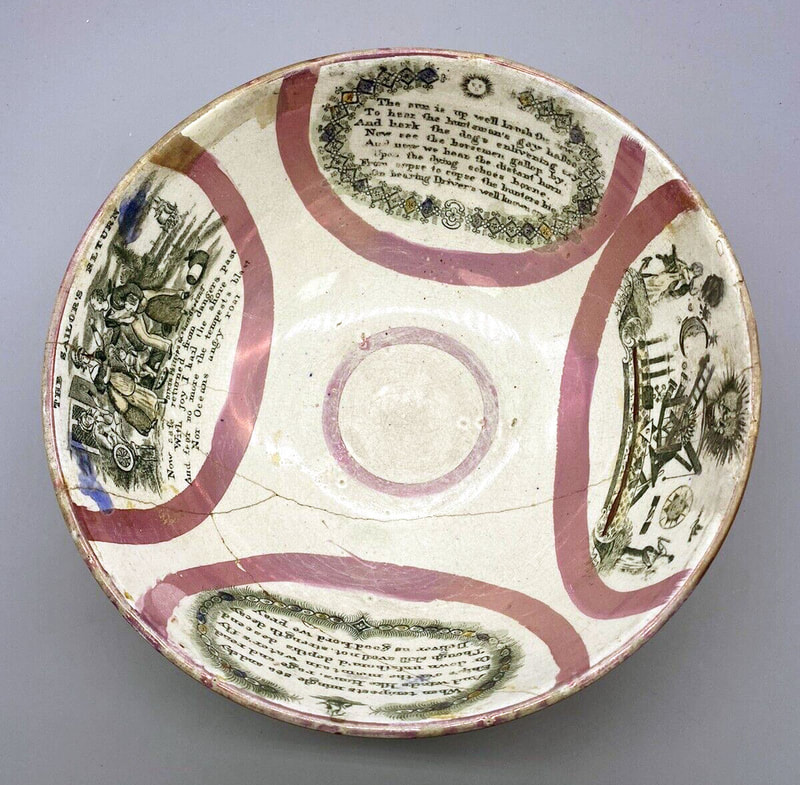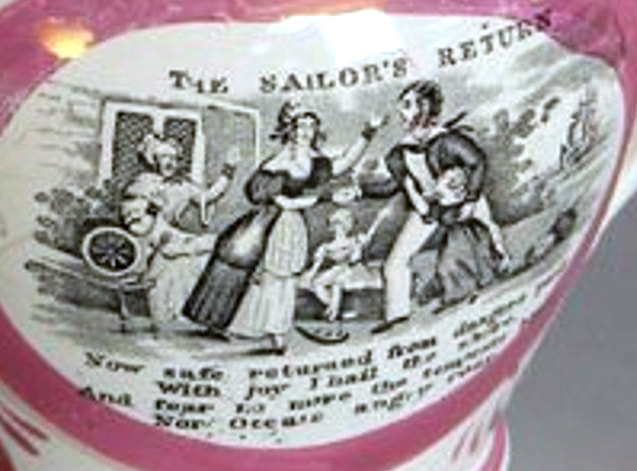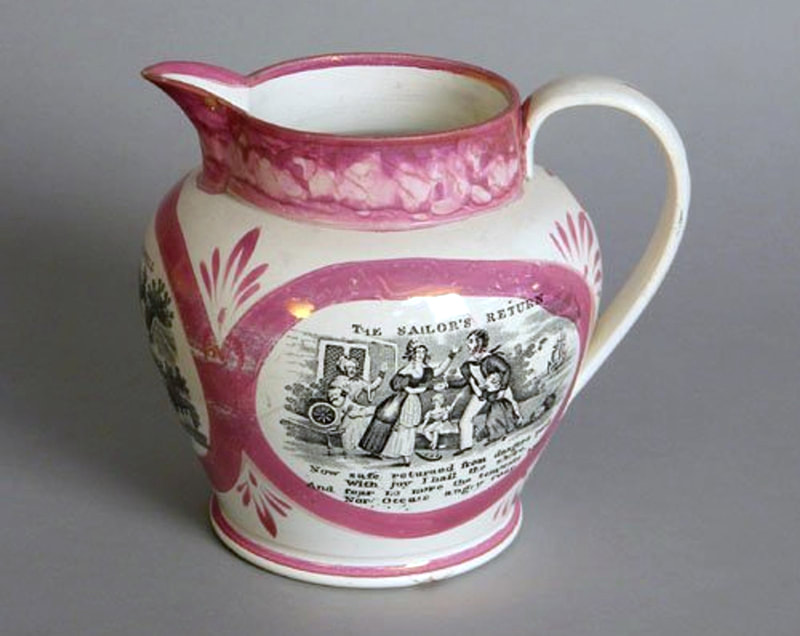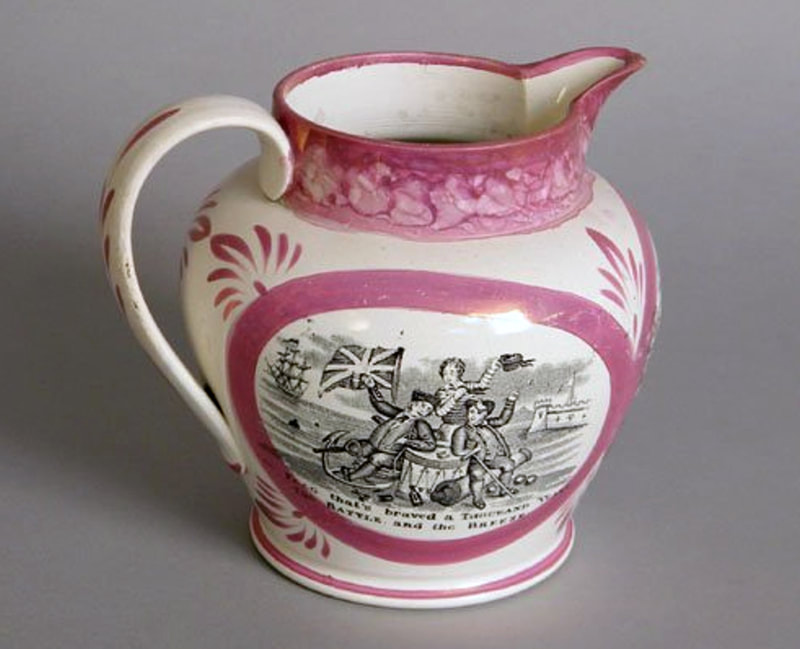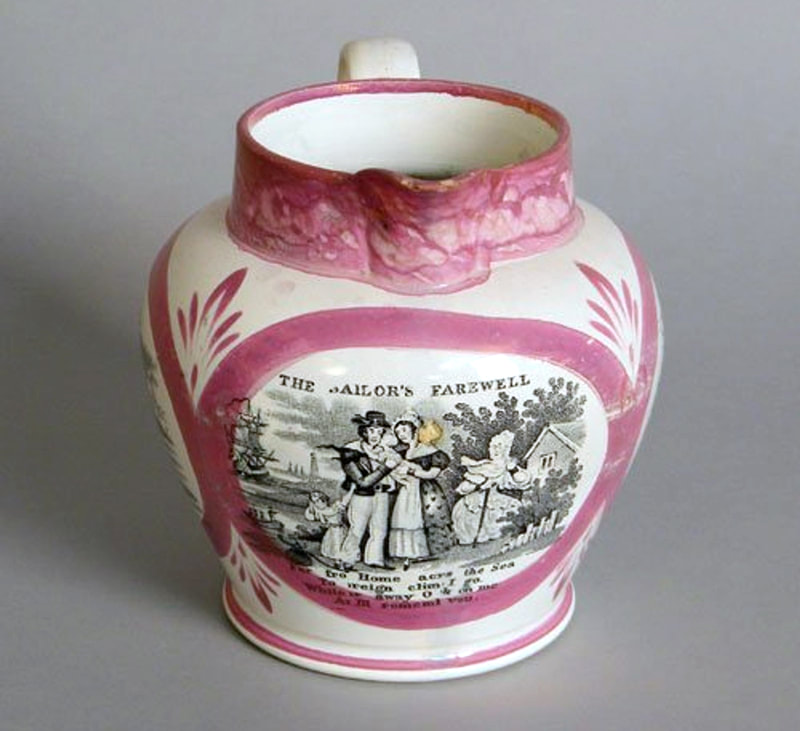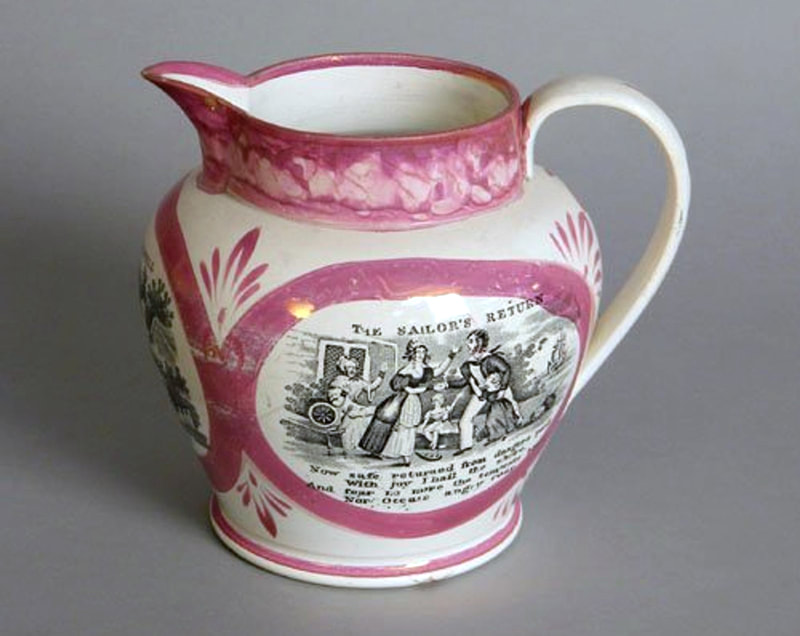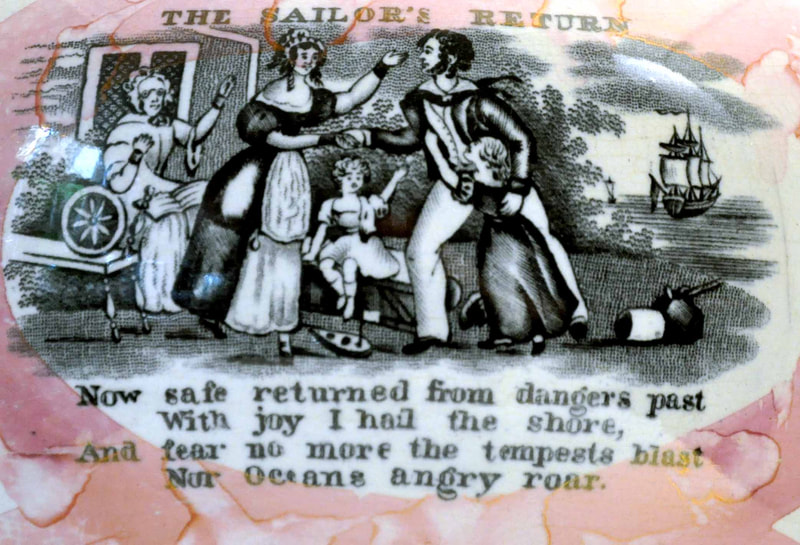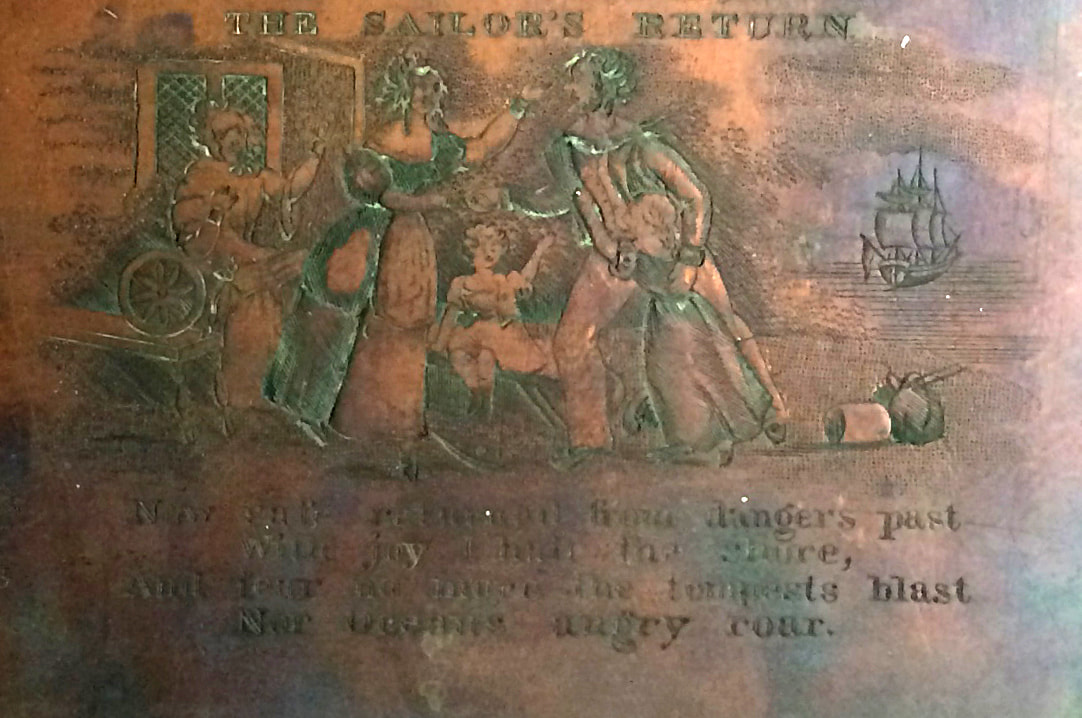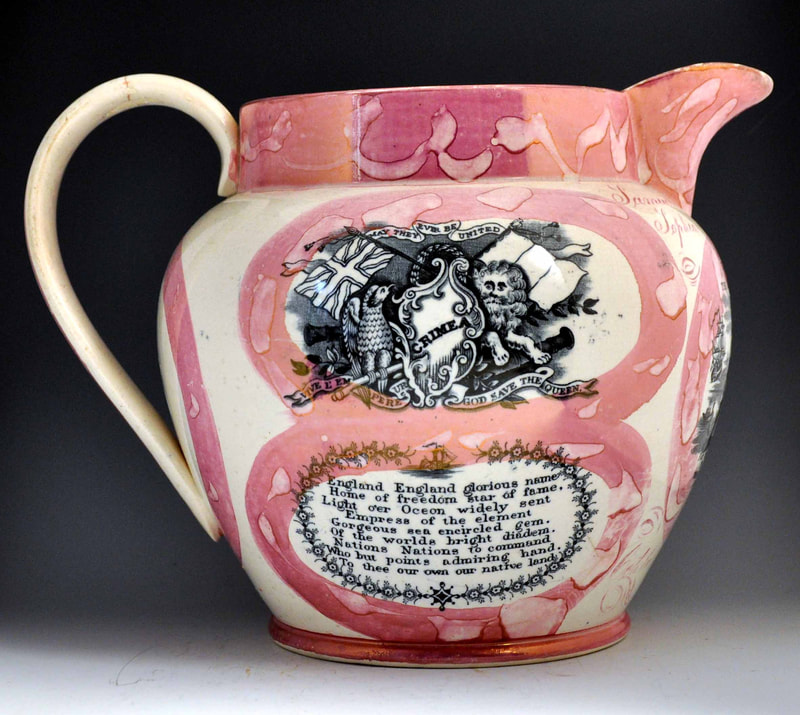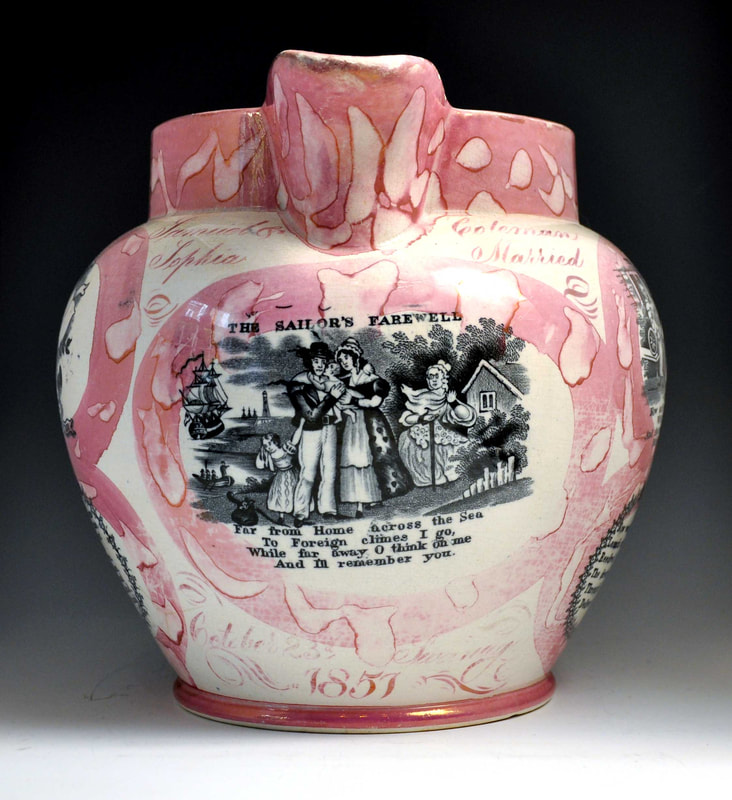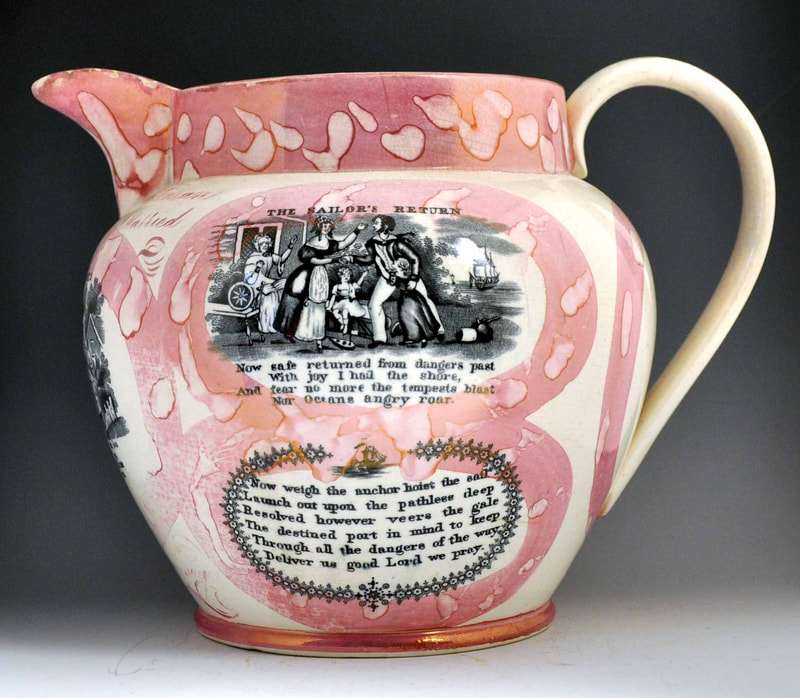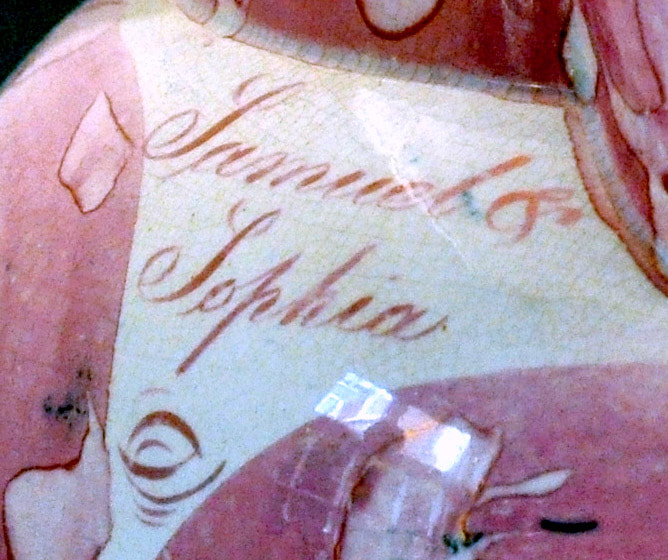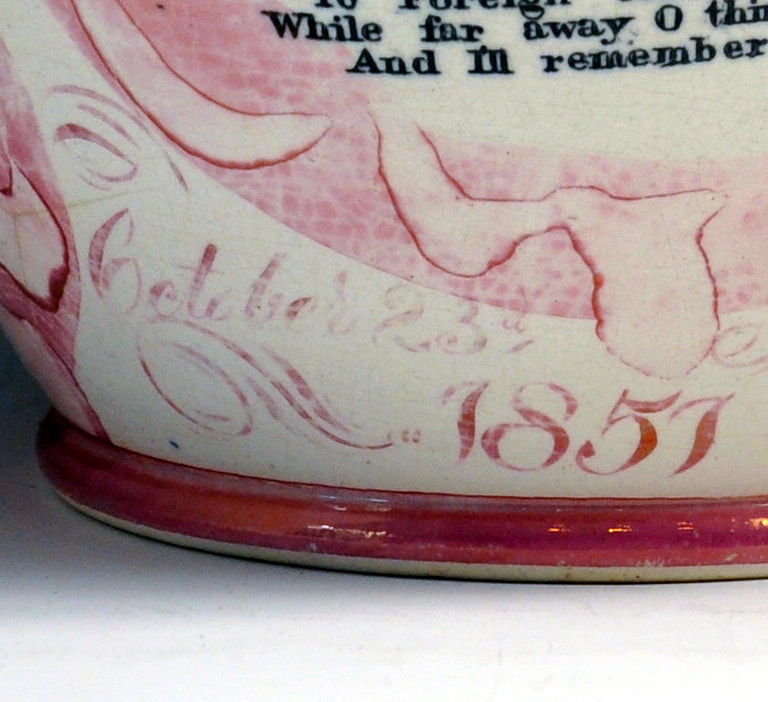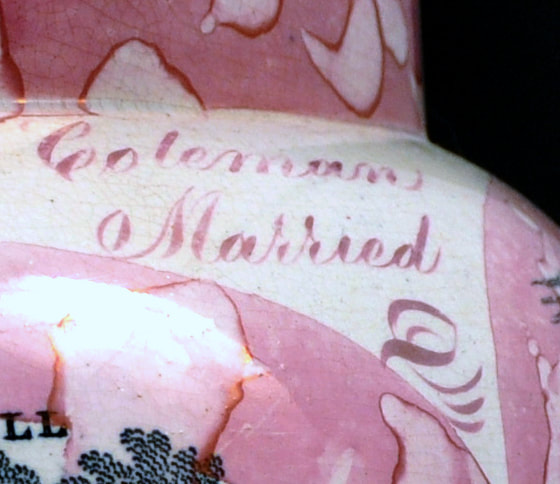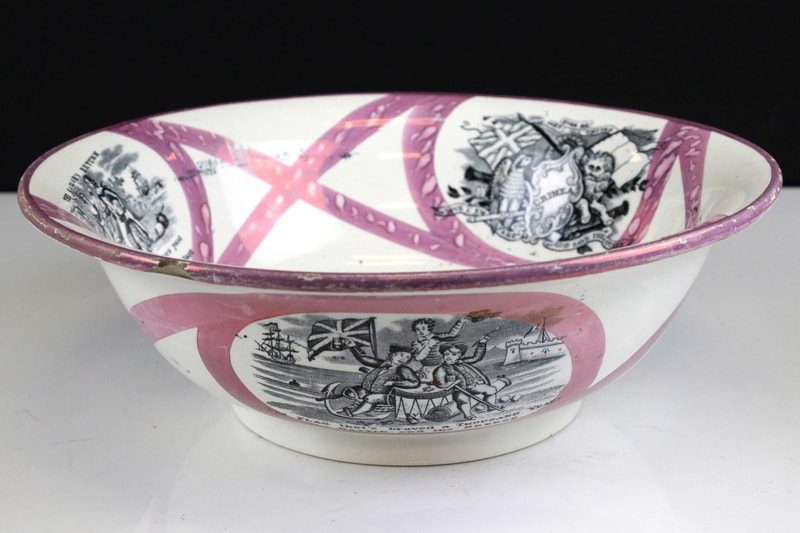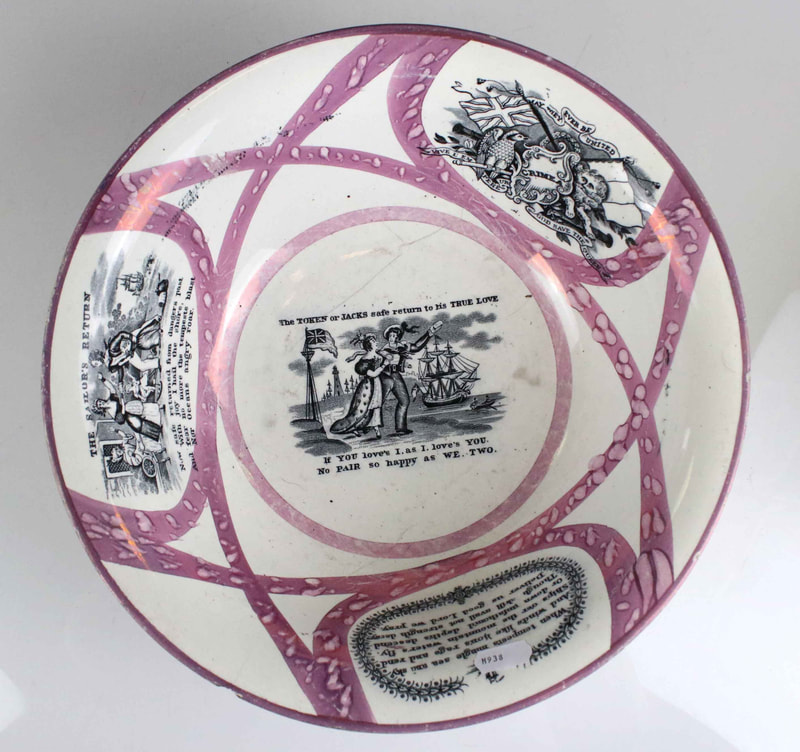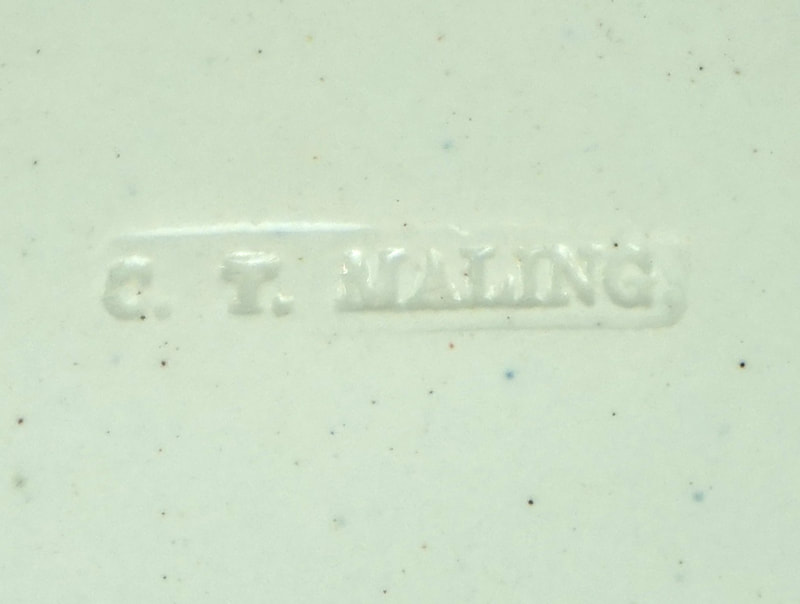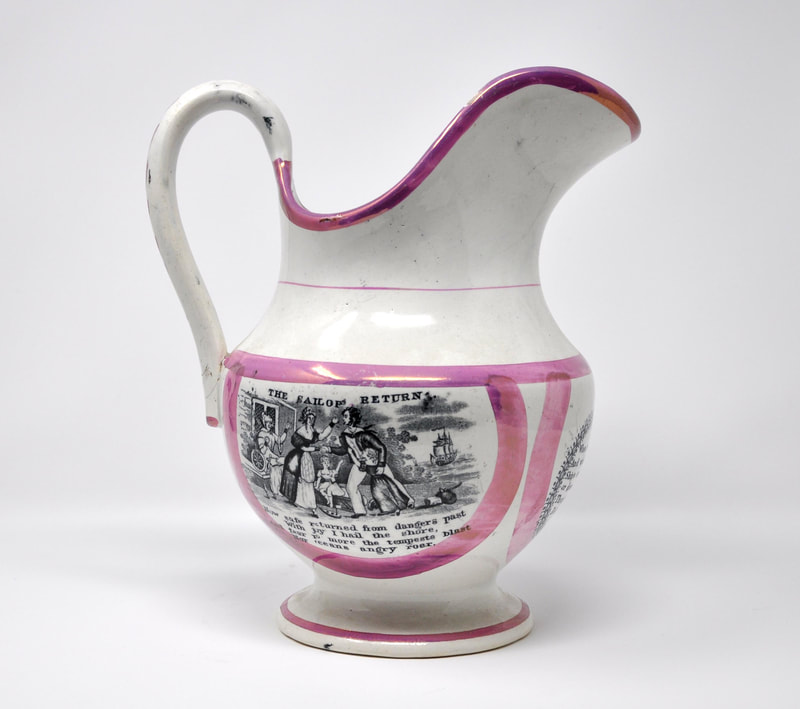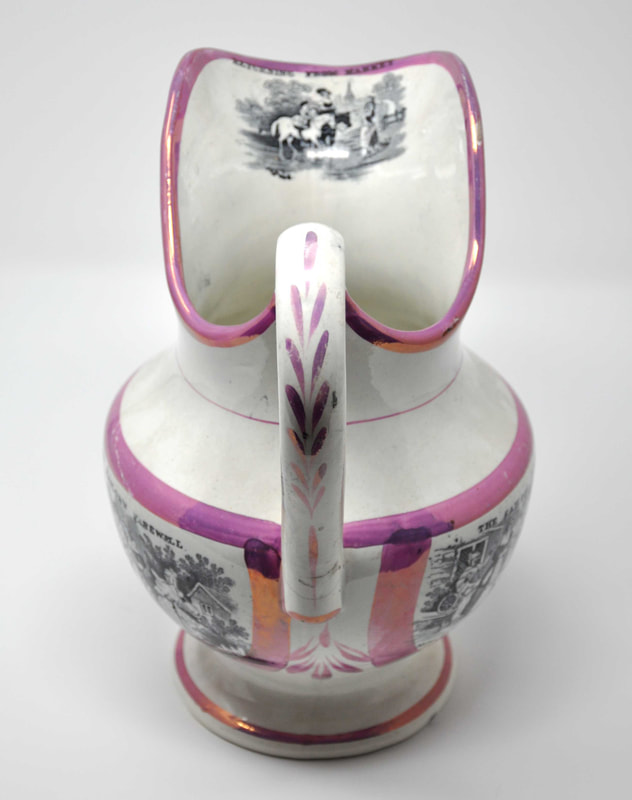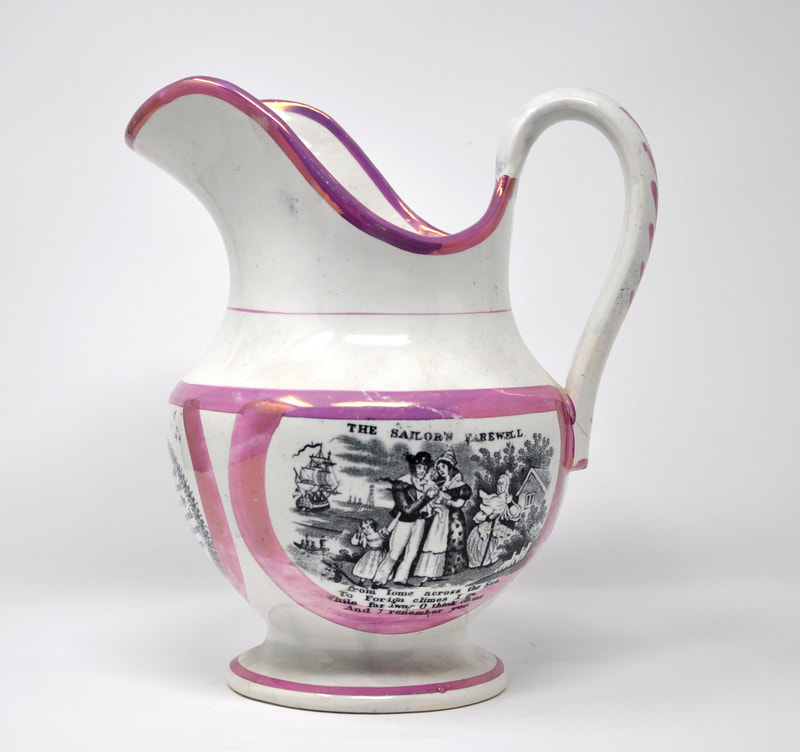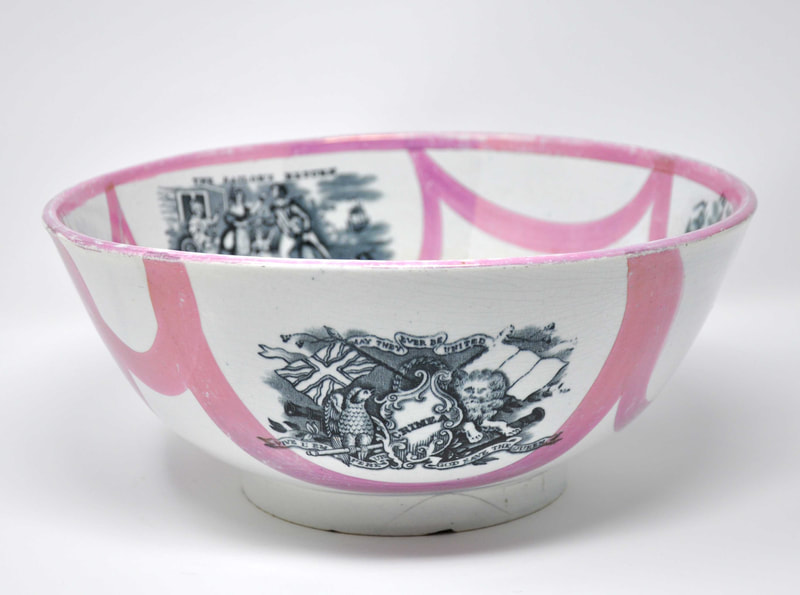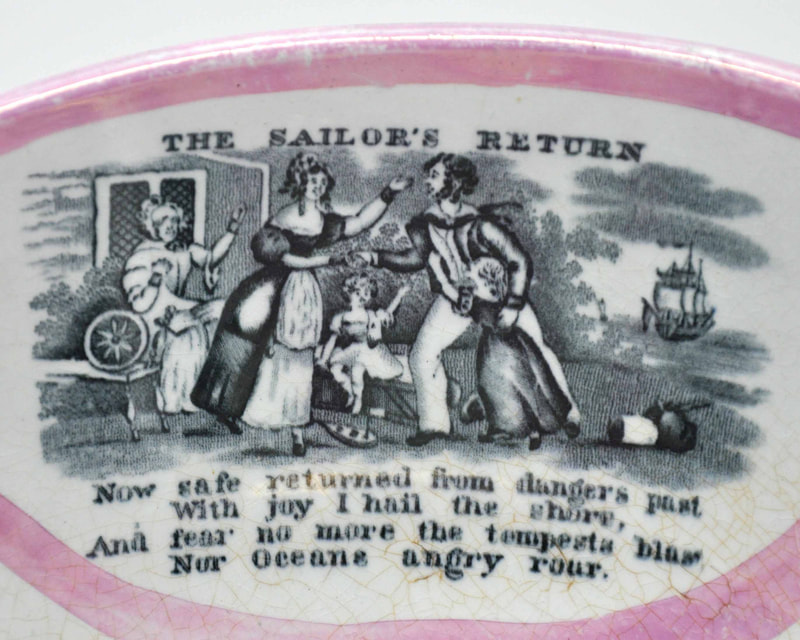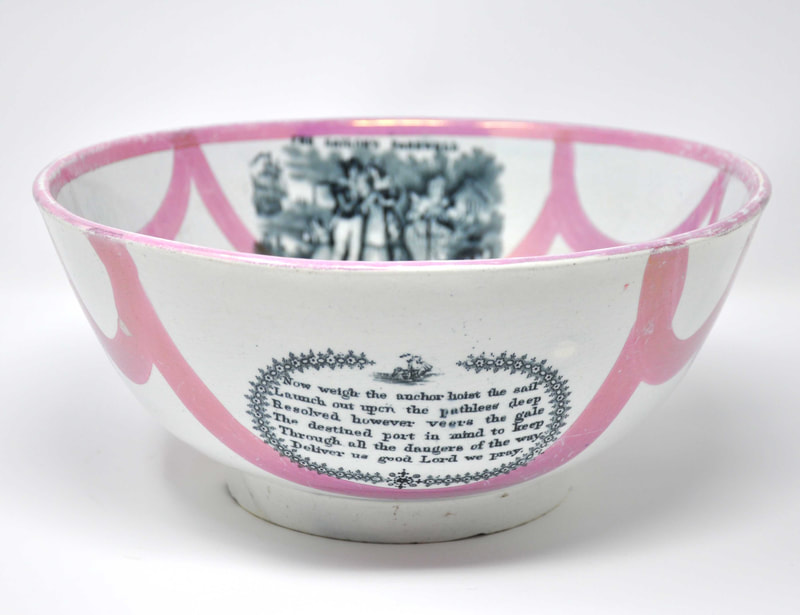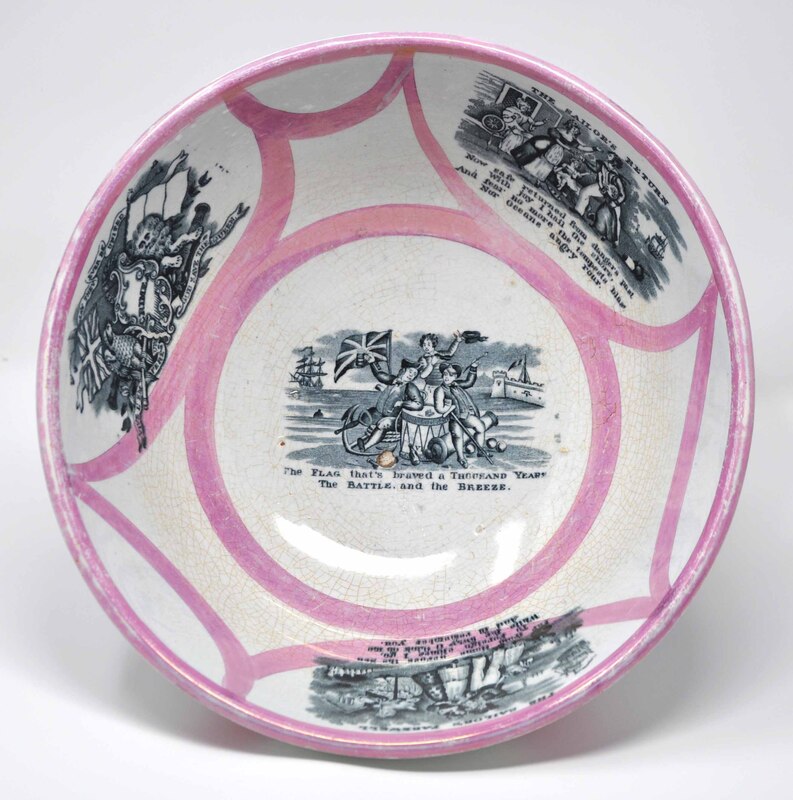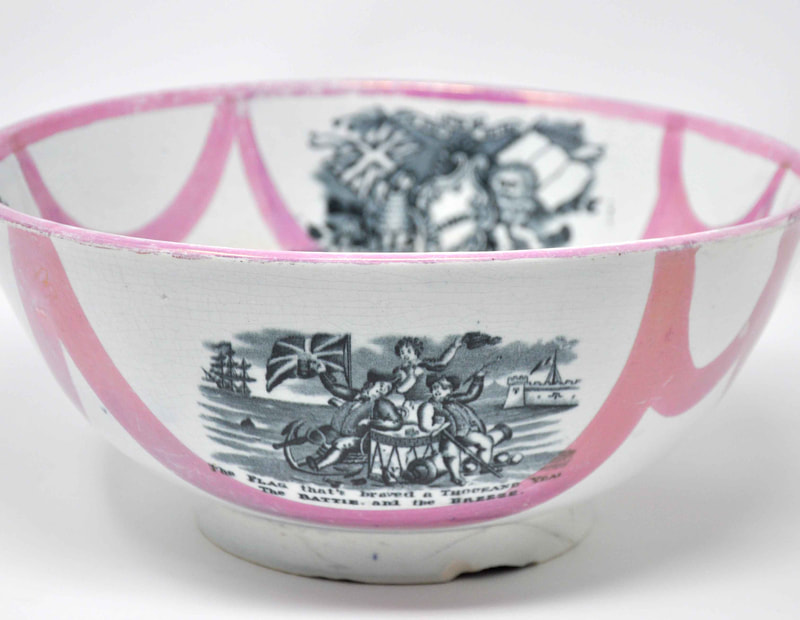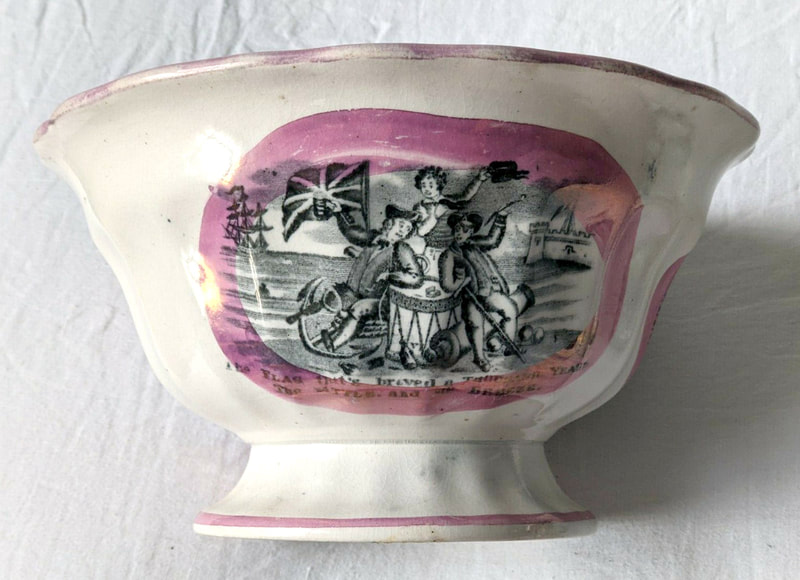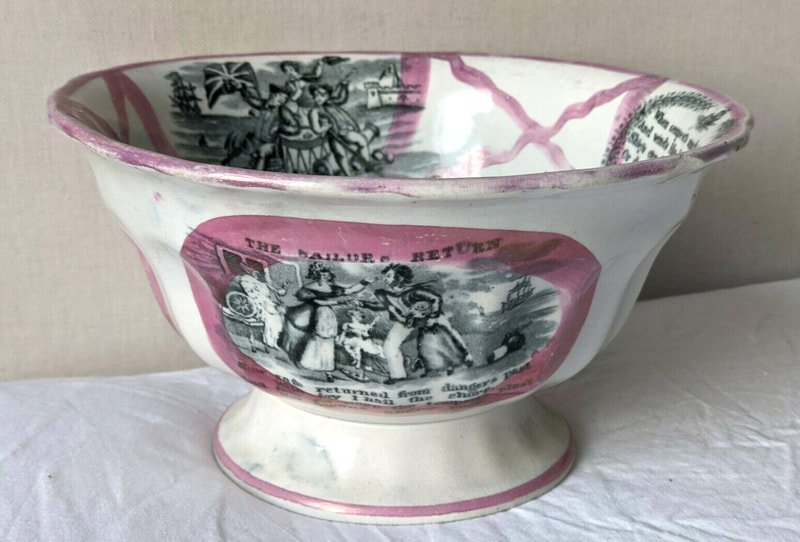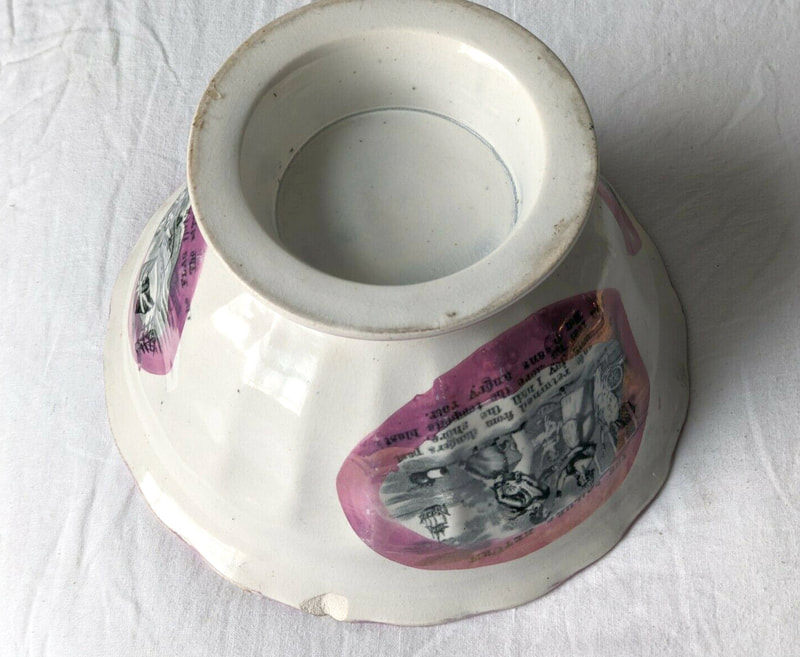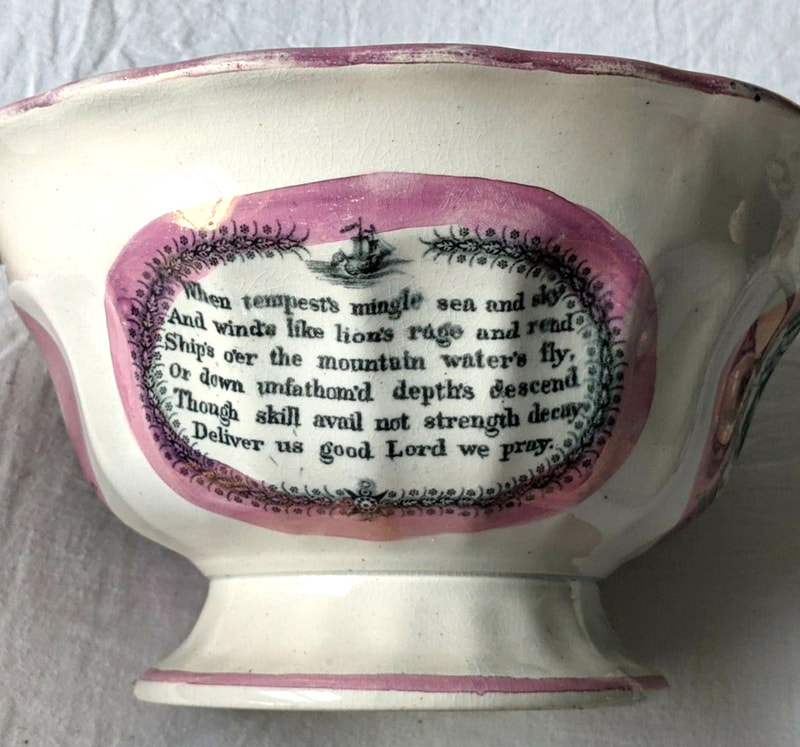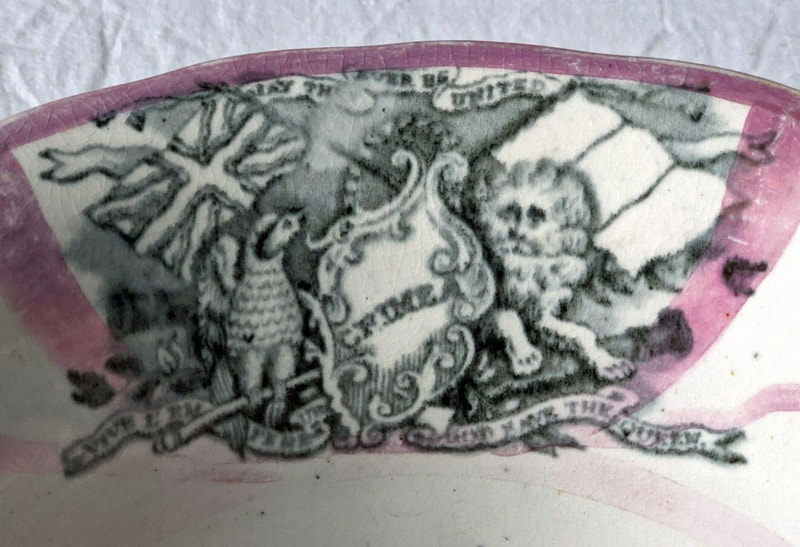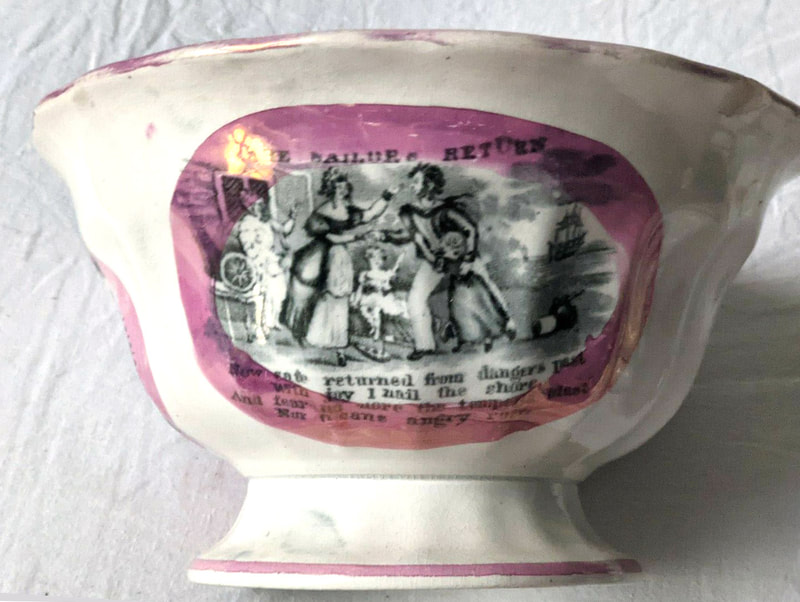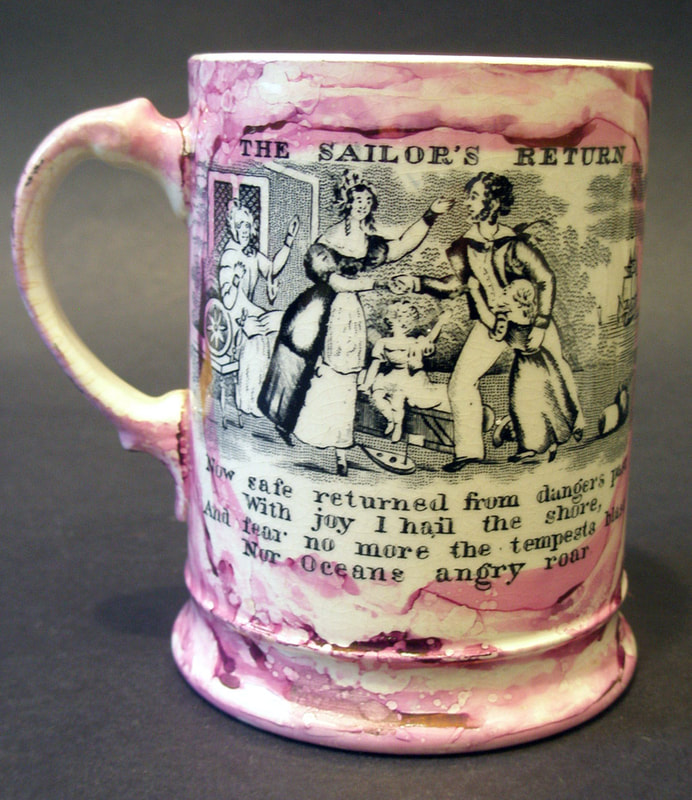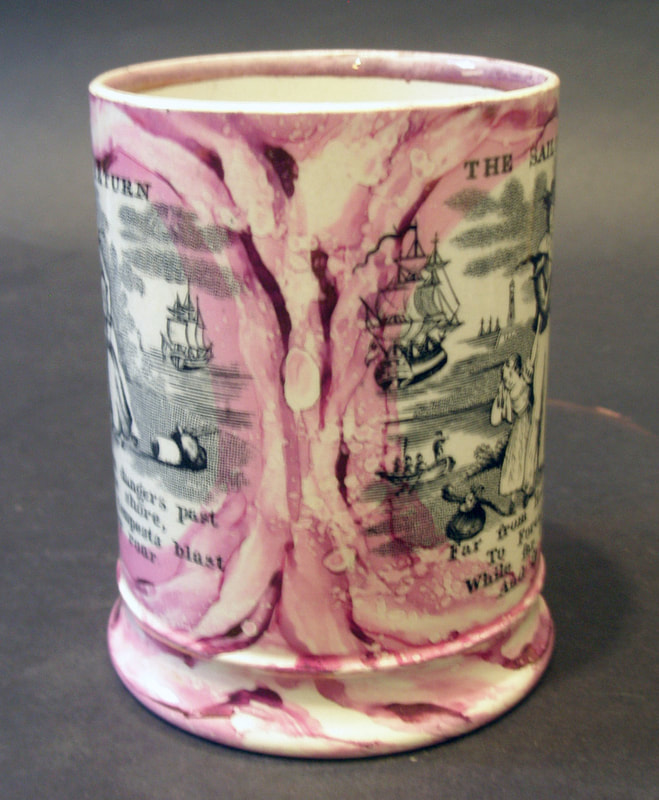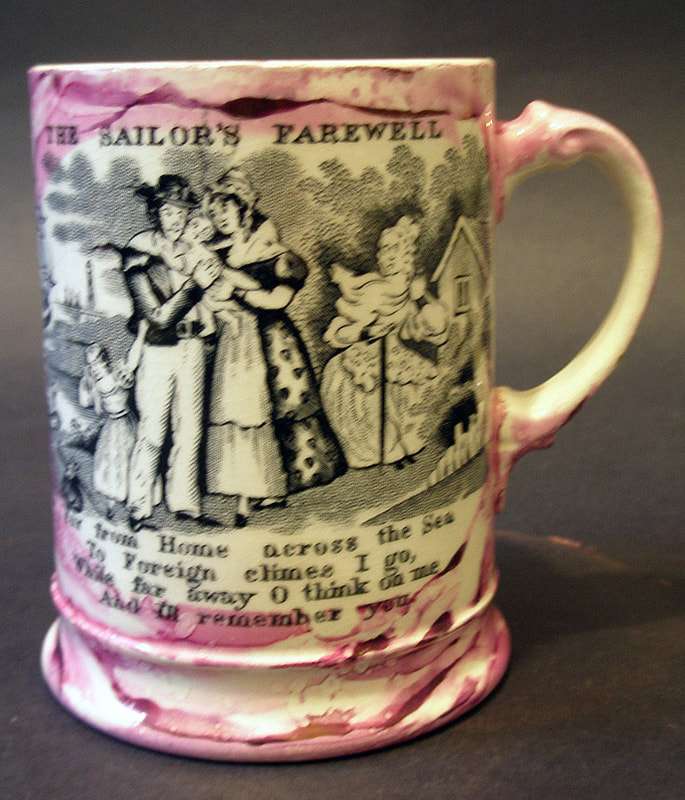Sailor's Return – Sunderland
See the Flag That's Braved page for an overview of this series of transfers.
Moore & Co, Wear Pottery, Sunderland
This version of the transfer has also likely been recorded on bowls with the Scott impress. During the 1850s, Scott's supplied Moore's neighbouring pottery with 'blanks' for decoration. This has caused some confusion. Moore-decorated items, like the jug below, tend to have a purple lustre collar and zig-zag lustre decoration.
Below, a large teapot with the transfer on the lid, from the Sunderland Museum & Winter Gardens, Tyne & Wear Archives & Museums collection. The Museum catalogue lists this item as 'probably' made at Scott's. However, the decoration and transfer printing, at least, were done by Moore's. The leaf-shaped lustre decoration appears on plaques from that pottery.
Scott of Southwick, Sunderland – plate 1
The jug (above and below) and frog mug have transferred flower decoration typical of Scott's Pottery. The obliterated mark under the bridge transfer on the jug suggests a date after 1841, when the partnership changed to Scott Brothers & Co.
|
As discussed on the Flag That's Braved page, Scott's had a second, slightly simplified, copper plate engraved (right detail), most likely when the first became worn or damaged. This second copper plate (see below) was used throughout the Crimean War period, c1855. |
Scott of Southwick, Sunderland – plate 2
The decoration of the jug below is typical of the 1850s. As with the bowl above (c1855), the pink lustre is applied in softer/curvier waves than on Moore items. Although, admittedly, the examples on this page are hard to distinguish on that basis!
An eel pot or butter dish with the transfer, paired with 'Crimea', c1855.
A distinctive plaque form used by Scott's, also c1855.
Ball's Deptford Pottery
The copper plate for this version of the transfer was donated by the Ball family to the collection of Sunderland Museum & Winter Gardens, Tyne & Wear Archives & Museums. At a later date, someone has added the fake printed inscription 'Dixon, Phillips & Co, Sunderland'. My guess is that this was done sometime after the Garrison Pottery closed in 1865 and with the intention to deceive.
The other transfers on the bowl include 'Jack Crawford, the Hero of Camperdown'. You can read more on Ian Holmes' website.
Sailor's Return – Tyneside
Unidentified Tyne pottery
The decoration on this jug has decorative elements that are very similar to those used by Carr and Patton in North Shields c1840s. However, the short spout is perhaps more typical of the Newcastle Pottery.
C T Maling, Ouseburn Bridge Pottery, Newcastle
The Maling copper plate (below right) now resides in the collection of the Laing Art Gallery, Newcastle upon Tyne (Tyne & Wear Archives & Museums). See here for an image of the other transfers on the copper plate.
The transfer appears on a wedding jug dated 1857.
Although the jug above has no maker's mark, the transfer also appears on the washbowl below with the CT Maling impress. The wash ewer beneath it is unmarked.
An unmarked bowl with the transfer and a different variation of lustre decoration.
The pedestal bowl below, with the CT Maling transfer, is likely later than the items above. These bowls tend to have slightly degraded transfers and are heavily potted.
20th century Maling reproduction
The mug below, made in the mid 20th century, could be mistaken for an original. The transfers come from the CT Maling copper plate. However, the moulded handle and the way the pink lustre is applied, give it away as a reproduction. The pink lustre lacks the iridescence of 19th century items. Maling marked some, but not all, of these later items with their castle mark.
